

Scotland is renowned for its breathtaking landscapes and rich history, and it is home to numerous iconic landmarks that truly capture the essence of the country. From the majestic Edinburgh Castle and the enchanting Loch Ness to the mystical Isle of Skye and the ancient ruins of Dunnottar Castle, Scotland offers a diverse array of landmarks that fascinate visitors from around the world. In this post, a few expert travel bloggers and I will take you on a journey to 37 landmarks in Scotland that are bucket list material for your next trip!
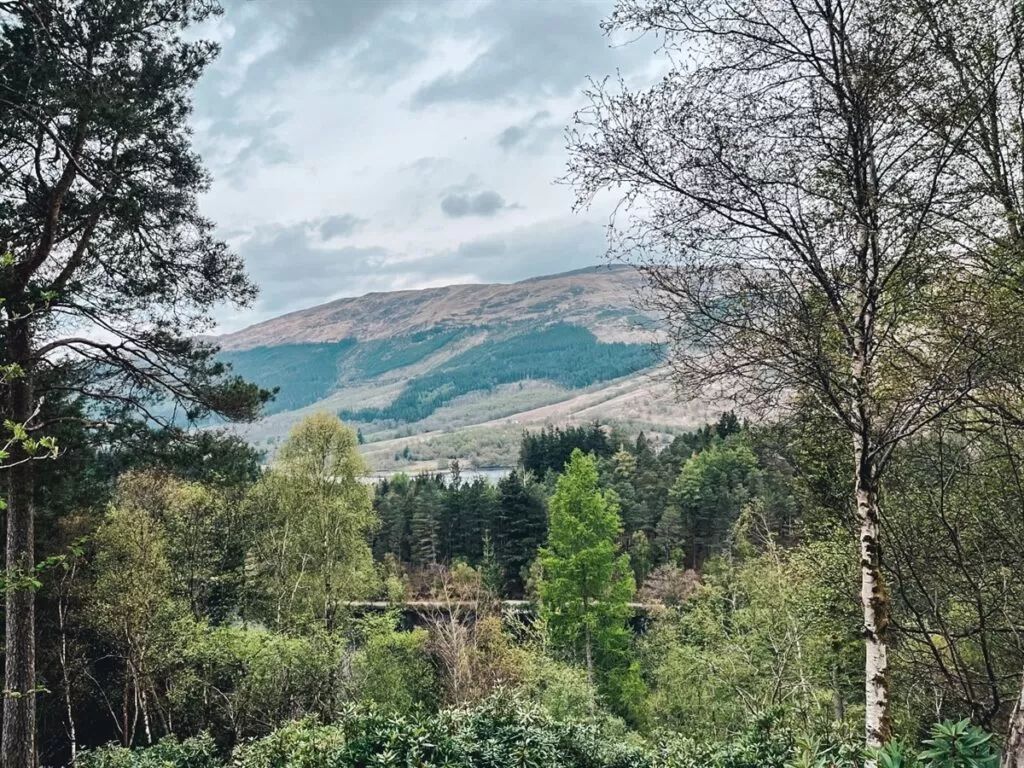
Glencoe, Scotland, UK
Scotland, with its rich history and vibrant culture, is a land steeped in tradition and heritage. From ancient clans and Celtic warriors to medieval castles and tumultuous battles, Scotland’s history is a captivating tapestry that continues to shape its identity until this day.
Scotland’s landscape is renowned for its breathtaking beauty, from the mist-covered Highlands and ancient forests to the enchanting islands and pristine lochs. Loch Ness, with its mythical monster, and the dramatic landscapes of the Isle of Skye are particularly emblematic of Scotland’s natural wonders.
The Scottish whisky industry is world-renowned, with distilleries dotted across the country. Scotch whisky is known for its distinct flavors and craftsmanship, making it a cherished national treasure.
Scotland’s Gaelic language and traditional music, often accompanied by fiddles and Celtic harps, add to the country’s cultural richness. Highland dancing, characterized by its energetic movements and colorful kilts, showcases Scotland’s traditional folk dance.
And if you visit during the summer, don’t forget to include a Highland Games event into your itinerary!
To help you plan your trip in this land of kilts, whiskey, and gorgeous natural wonders and monuments, I’ve asked a few pro blogger friends to help me put this list of landmarks together.
I have divided them into various subcategories, for example, natural landmarks, castles, and historic sites for your convenience.
Without further ado, here are 37 incredible landmarks in Scotland to explore on your next trip!
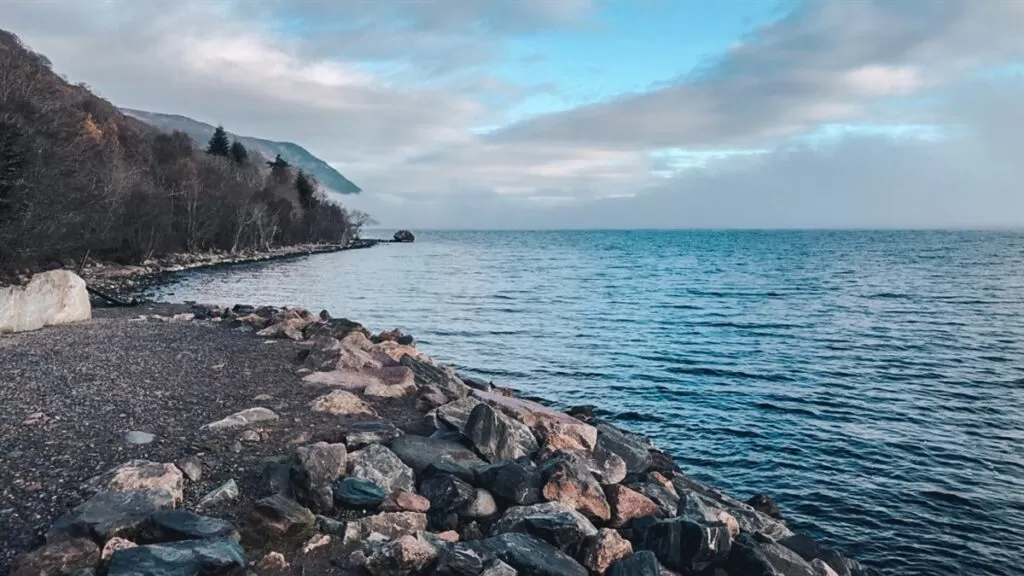
Landmarks in Scotland: Loch Ness
Scotland is famous for its tales and legends that are (of course) true! Any traveler spending time in Scotland should absolutely make sure they see one of the country’s most famous landmarks: Loch Ness.
The Loch Ness, of course, brings to life the Scottish legend of the famous Loch Ness Monster. This body of water lies in Northern Scotland and is one of the most popular things to see! Visitors flock to the shores of Loch Ness from all over, hoping to glean just the smallest glimpse of “Nessie,” the very real monster who lives in its depths.
The best thing to do during a visit to Loch Ness is take a boat cruise across the waters to search for Nessie. Some of the best cruise options will take you across the water to Urquhart Castle, a castle along the banks whose historic ruins are open to the public for exploring!
The easiest way to get to Loch Ness is to stay in the nearby town of Inverness. There are many ways to get from Inverness to Loch Ness quickly. You can travel by bike, car, or even tour to get to this popular Scottish landmark.
Inverness is a beautiful town laden with history; enjoy a stay at the Loch Ness Country House complete with a relaxing afternoon tea in Inverness.
By Taylor from Traverse With Taylor
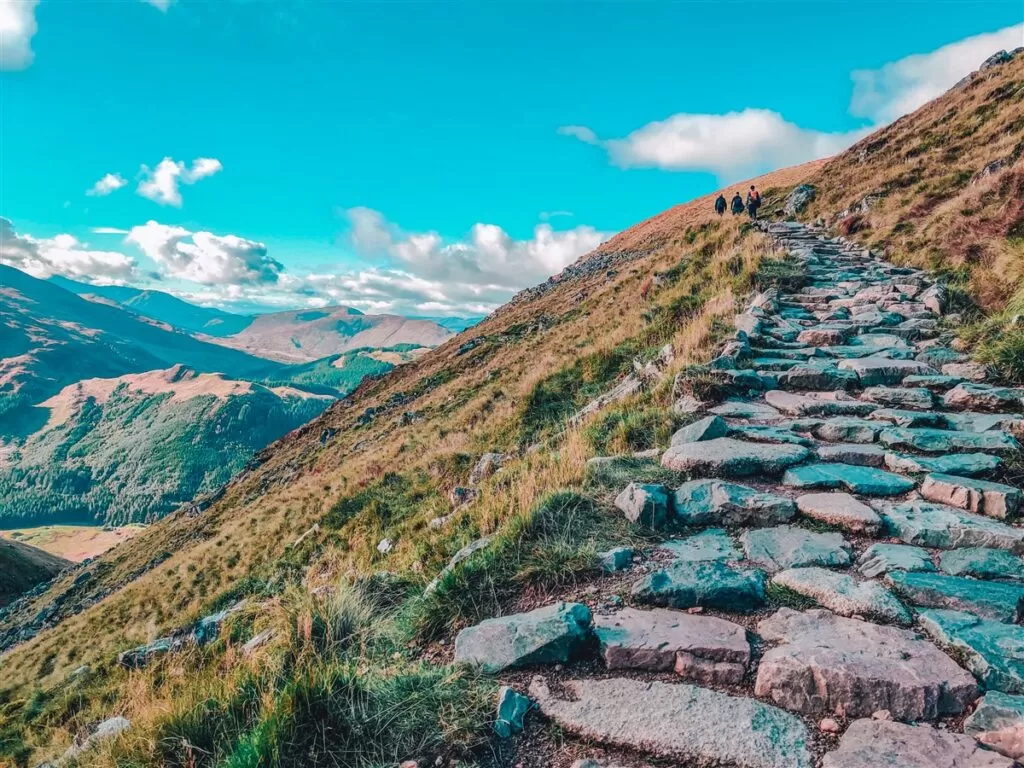
Landmarks in Scotland: Ben Nevis
Ben Nevis is without a doubt the biggest landmark in Scotland, as it is the tallest mountain in the country, coming in at 1,345 meters (4,413 feet) at its peak. This makes it the tallest mountain in the whole of the UK too.
It’s the perfect example of the natural beauty that Scotland has to offer, as the landscape of Ben Nevis and the Grampian Mountains is breathtaking. The mountain range is in the north, in the highlands, around 3-4 hours from Edinburgh by car.
Driving to Ben Nevis is the best way to get there. The drive is so scenic and as you begin to drive through the highlands, you will feel like you are on another planet. And if you are traveling Europe, you can use your Interrail pass on the Eurostar to get to the UK and check out Ben Nevis!
Once there, the obvious thing to do is to climb the mountain. It’s not for the faint-hearted but the view is so worth it. If you catch it on a clear day, you can see for miles upon miles of stunning Scottish countryside. Not to mention the beauty of the hike with the valleys, waterfalls, and sometimes snow!
The best place to stay near Ben Nevis is the West Highland Lodge, which offers the perfect outdoor stay as you are in a nice little lodge instead of a hotel room for a fraction of the price. It’s a win-win and it’s right on the doorstep of Ben Nevis for when it’s time to explore.
So make sure to check out Ben Nevis during your trip to Scotland, you won’t be disappointed!
By Josh from A Backpackers World
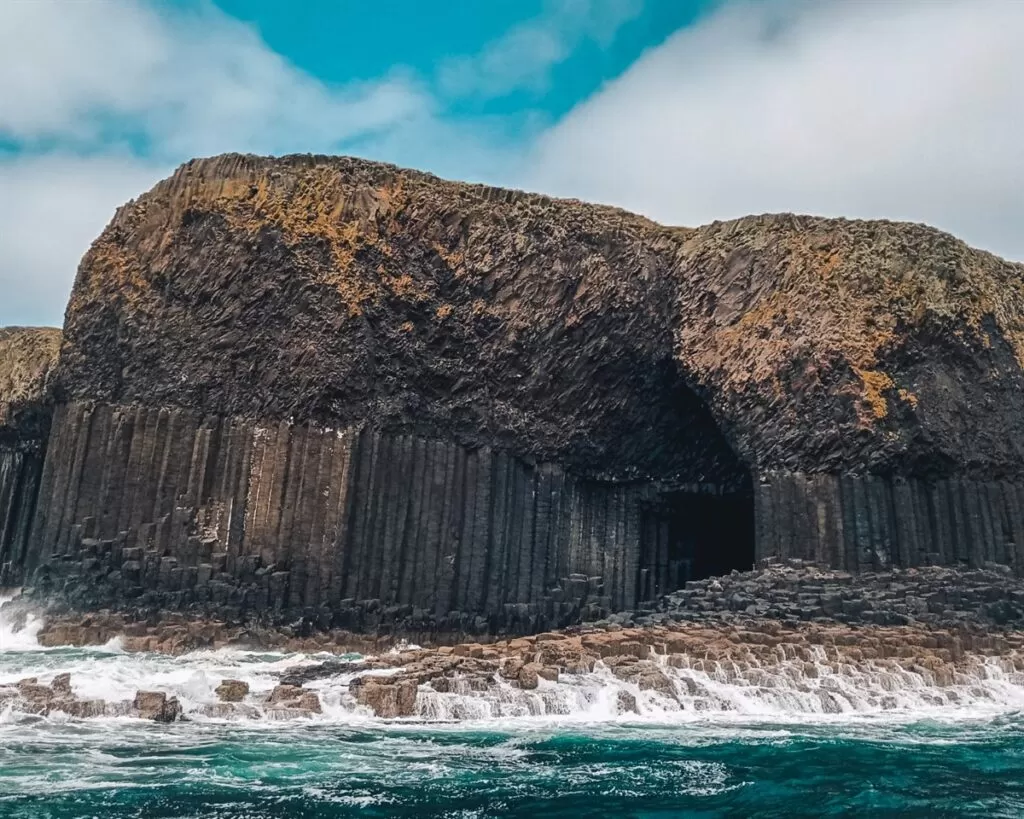
Landmarks in Scotland: Fingal’s Cave
World-famous Fingal’s Cave has inspired creatives from J. M. W Turner to Jules Verne and is best known for being the subject of Felix Mendelssohn’s Hebrides Overture, written after his visit in the 1820s: the waves crashing inside the cavern’s huge arched entrance so impressed him that he scribbled down the opening melody on the spot! Located on the uninhabited Inner Hebridean island of Staffa, the spectacular sea cave is reached by a half-hour boat journey from the little port at Fionnphort village on the Isle of Mull.
Staffa gets its name from the dark basalt columns that surround its base, so-called by the Vikings because of the resemblance to the wooden staves they used in their buildings. If you’ve been to the Giant’s Causeway in Northern Ireland or Reynisfjara Beach in Iceland then you’ll recognize these hexagonal volcanic rock formations.
Weather permitting, boats land on Staffa, allowing visitors to explore the resident (from May to July) cliff-top puffin colonies and even (on very calm days) follow a natural walkway down to the cave’s enormous entrance, stretching 20m high and 75m long. During summer months you might also see dolphins, porpoises, and minke whales.
Trips are weather dependent and if the sea is deemed too rough to land and go ashore, the boat instead will stop in front of Fingal’s Cave so visitors can watch the waves crash inside. The captain might even play Mendelssohn’s overture through the boat’s speakers which is very atmospheric: the composer’s spectacular world painting perfectly captures the surging sea.
To visit Fingal’s Cave, join a boat trip between April and October either from Oban on the Scottish mainland (West Coast Tours runs a fantastic 3 Islands Tour that visits Mull, Iona, and Staffa in one day) or if you’re holidaying on Mull, Staffa Trips runs a boat twice day from Fionnphort. You could also take your own car on the ferry from Oban to Mull and drive to Fionnphort yourself to join a boat trip.
For accommodation, Maolbhuidhe Bed and Breakfast, set within a charming former croft house, is located about 1 mile from Fionnphort, or if you’re starting from the mainland, Don Muir Guest House in Oban is a 10-minute walk from the ferry port and enjoys beautiful views over Oban bay.
By Emma and David from Team Thomas Travels
Kilt Rock on the Isle of Skye gets its name from its unique shape. The folds of the stone bear remarkable similarities to that of a kilt or tartan.
Kilt Rock is a dramatic basalt rock cliff that rises nearly 300 feet in the air. Formed by volcanic activity, the face of the cliff is made up of hexagonal columns. Falling over the rock face is Mealt Falls.
There is car parking and a viewing area to view Kilt Rock and the Falls. If you want to get a bit closer there is a short .2 miles path to get the best views of the Rock.
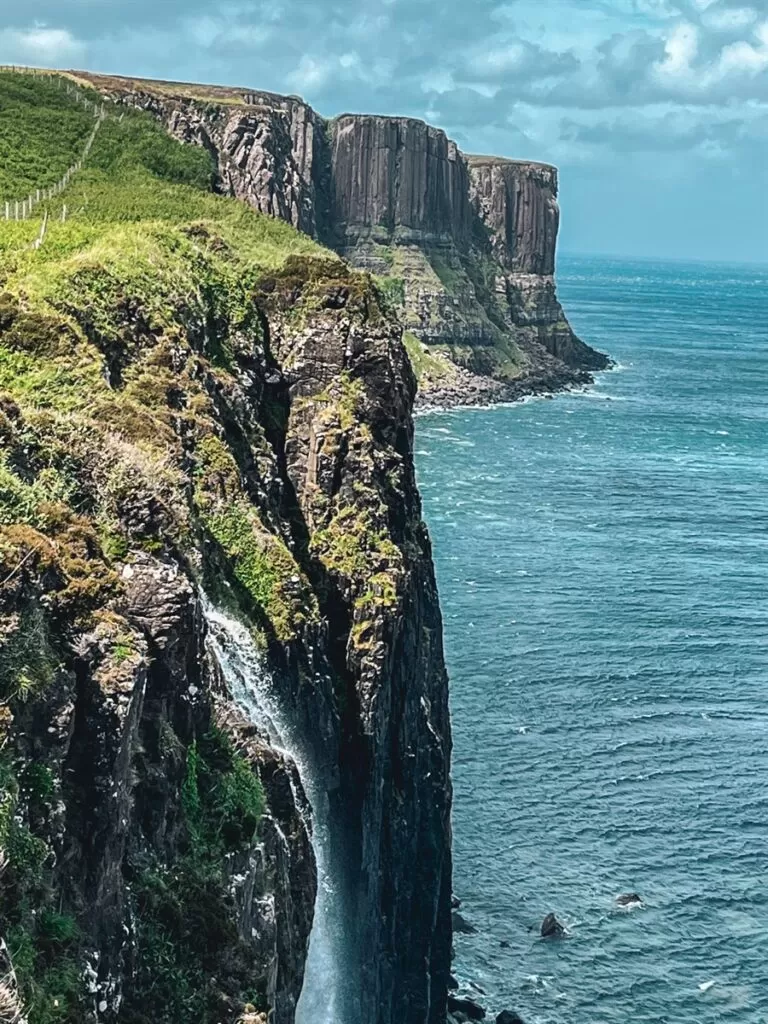
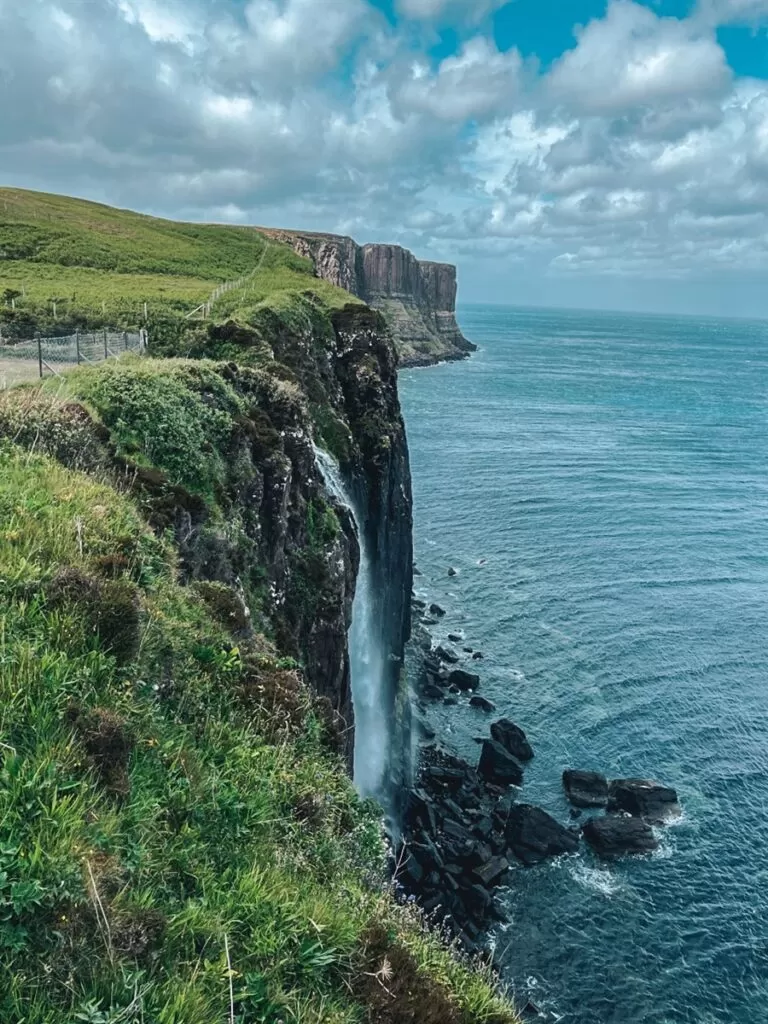
Landmarks in Scotland: Kilt Rock, Isle of Skye
Kilt Rock is located on the eastern coast of the Trotternish Peninsula, around 10 miles from Portree, which is the largest town on the Isle. If you are looking for a unique place to stay, try Skeabost View Pods. These tiny houses come with everything you need for a rustic stay in the countryside just outside of Portree.
You can also travel to the Isle of Skye as a day trip from Fort William. Fort William is an excellent base for your Scotland Highland adventure, especially if you have plans to ride the famous Jacobite Train, better known to Harry Potter fans as the Hogwarts Express, climb Mount Nevis, or a day trip to Loch Ness.
Regardless of whether you choose to visit Kilt Rock as part of a longer stay on the Isle of Skye or as a day trip, you will be awed by its rugged beauty.
By Faith from 3 Tickets Please
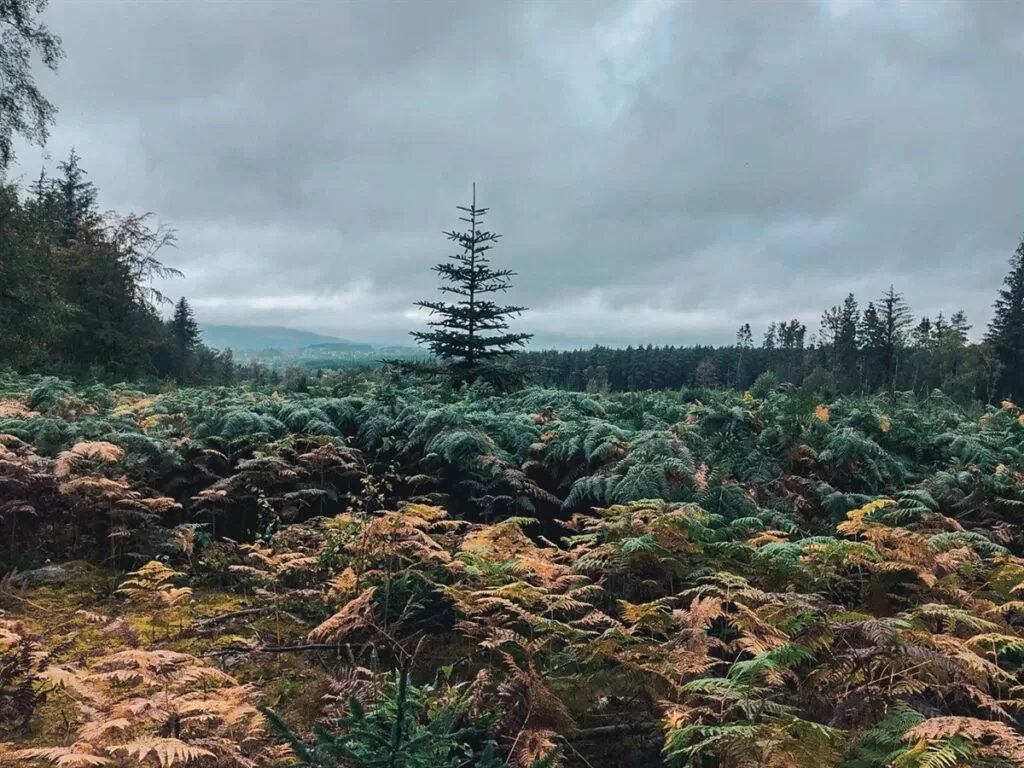
Landmarks in Scotland: Cairngorms National Park
The Cairngorms is a mountain range located in the eastern part of the Scottish Highlands. It is the largest National Park in Scotland and is known for its stunning natural beauty, diverse wildlife, and outdoor recreational opportunities. The Cairngorms is a popular destination for hikers, skiers, and nature enthusiasts worldwide.
The Cairngorms offer visitors various experiences, from hiking and skiing to wildlife watching and mountain biking. The area is home to a diverse range of wildlife, including red deer, golden eagles, and ptarmigan, making it a great destination for nature lovers.
For visitors looking for a place to stay, the Fraoch Lodge in the nearby village of Boat of Garten is a great option. This family-run guesthouse offers comfortable and sustainable accommodation, as well as excellent food and a friendly atmosphere. The Fraoch Lodge is ideally located for exploring the Cairngorms, with many of the area’s top attractions just a short drive away.
To get to the Cairngorms, visitors can take a train to Aviemore, the area’s main town. From there, they can take a local bus or taxi to their accommodation or hire a car to explore the area independently. Alternatively, visitors can drive directly to the Cairngorms and park at one of the many car parks in the area.
By Victoria from My Australia Trip
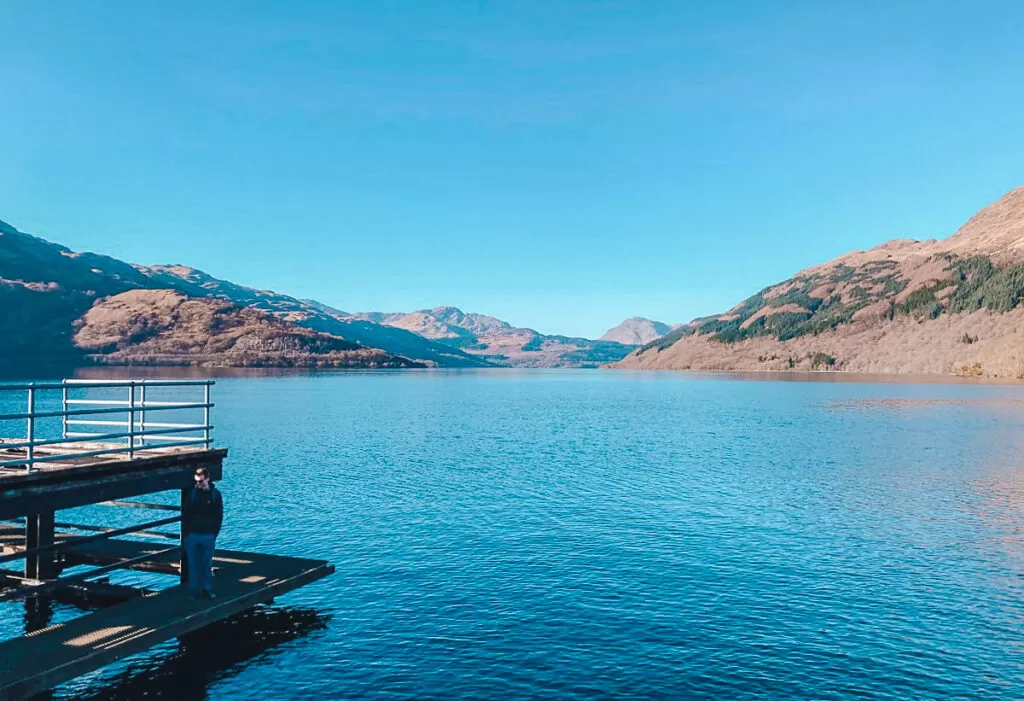
Landmarks in Scotland: Loch Lomond
Loch Lomond is one of Scotland’s most famous landmarks and for good reason. This freshwater lake is the largest in the UK by surface area and is surrounded by some of Scotland’s most stunning scenery which makes it a super popular landmark in Scotland.
One of the reasons why Loch Lomond is such a popular landmark in Scotland is because of the range of things to do in Loch Lomond. You can enjoy some hillwalking, cycling, or boating on the loch. There’s also a surprising amount of wildlife nearby including red deer, otters, and ospreys.
Many consider Loch Lomond to be so special because of its beautiful surroundings. The loch is surrounded by rugged hills and mountains, including Ben Lomond, which is one of Scotland’s most famous Munros. There are also numerous islands dotted throughout the loch, some of which can be visited by boat and one even has kangaroos on it!
If you’re planning a trip to Loch Lomond, there are plenty of good accommodation options nearby but camping is one of the best ways to experience this beautiful landmark. You’ll need a permit to camp along the lakeside from March to the end of September and Lochan Maol Dhuinne is the best spot if you want to hike up Ben Lomond.
Loch Lomond is in Loch Lomond and the Trossachs National Park and it’s easy to get to from both Glasgow and Edinburgh by public transport or by driving. You can catch a train from both cities to Balloch and from there, it’s easy to explore some of the loch on foot.
By Hannah from That Adventurer Blog
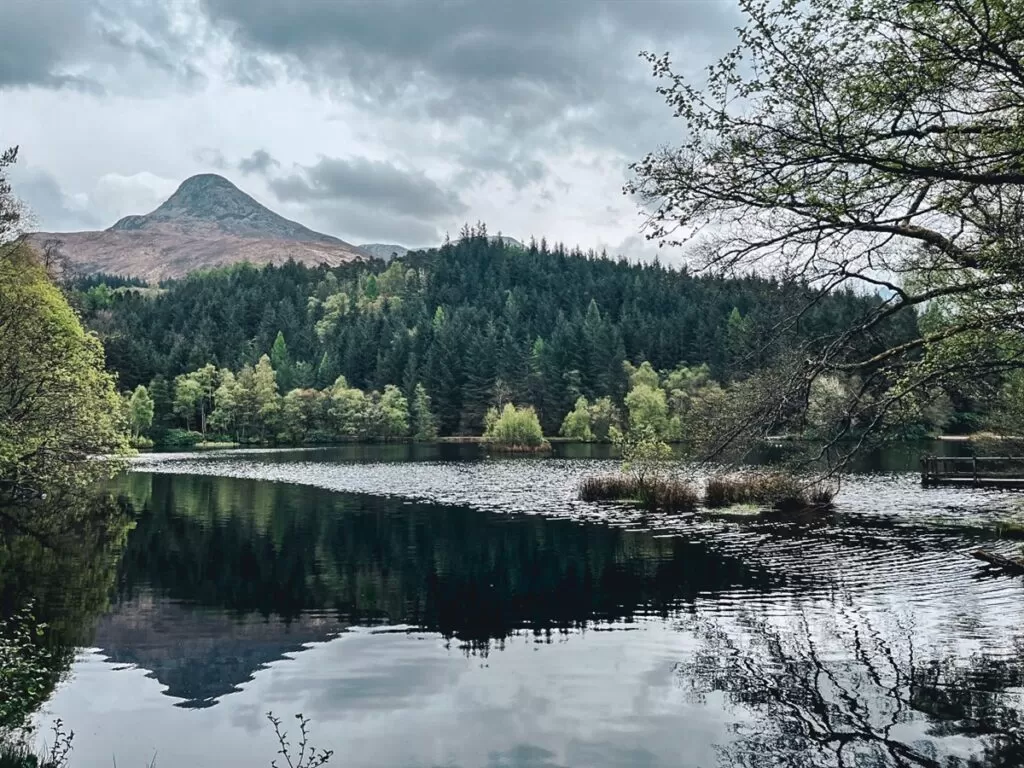
Landmarks in Scotland: Glencoe
Glencoe is a National Scenic Area in Scotland, where you can experience the drama, wildness, and splendor of the Highlands. The highlight of Glencoe is undoubtedly the walking trails, which vary in difficulty from the very easy trails of Glencoe Lochan to the 12-kilometer Bidean Nam Bian hike. These trails offer views of pristine lakes, beautiful tree-covered landscapes, and the distinctive dramatic mountains of the Scottish Highlands.
Glencoe is located a short bus ride or drive from the end of the West Highland Way trail, near the larger Fort William area. To reach Glencoe, travel by train, bus, or car to Fort William, then catch a local bus or drive into town. There are buses throughout the day, so you can easily visit Glencoe on a day trip from Fort William or stay the night in a hotel so you’ll have more time to explore the area.
For its part, the town has a few colorful shops and restaurants, along with a secret garden that you can visit a short walk from the bus stop. There are also a few cafes and gift shops in the area, so you can pick up a cup of tea and a few souvenirs.
There are several wonderful places to stay in the area, both in and near the town. One great choice is the RiverBeds – Luxury Wee Lodges with Hot Tubs, a set of private lodges that are set on a golf course in the Glen Co Valley. These lodges are beloved by visitors for the beauty of the property and for the thoughtful touches, like a delightful breakfast that is delivered each morning directly to your door.
By Amber from Amber Everywhere
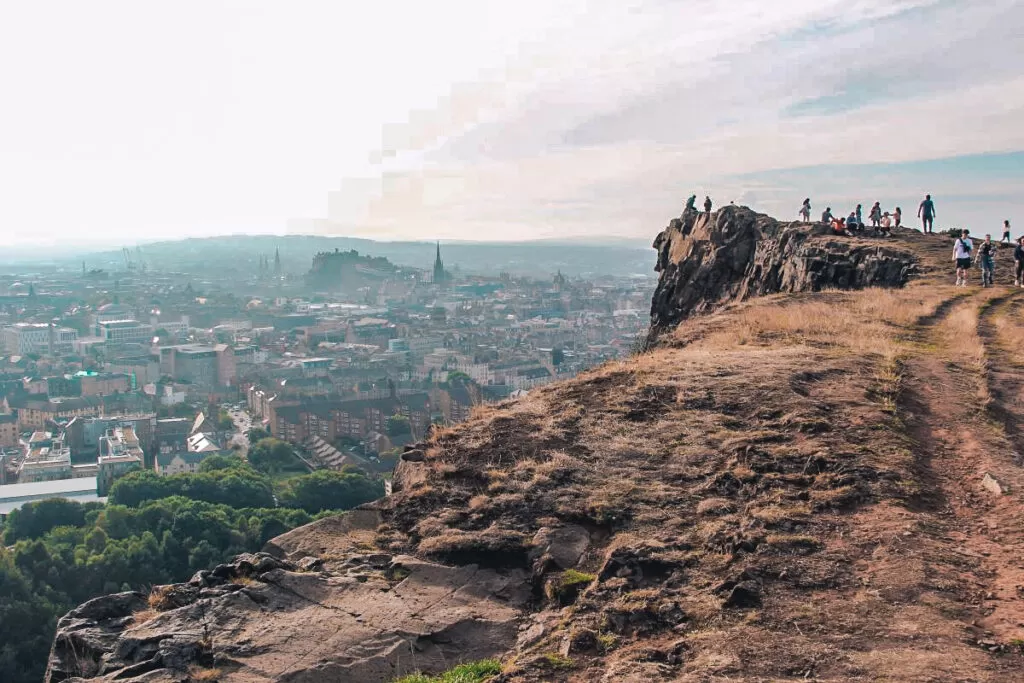
Landmarks in Scotland: Arthur’s seat
One landmark in Scotland that shouldn’t be missed is Arthur’s Seat in Edinburgh. Arthur’s Seat is an extinct volcano that overlooks the city of Edinburgh. Its highest point is 251 meters or 823 feet. It’s located in Holyrood Park at the end of the Royal Mile.
Arthur’s Seat should be enjoyed from both above and below. The hike is considered moderate in difficulty and takes about 2 hours to complete. The views from the top are absolutely stunning.
Early morning and dusk are wonderful times to visit as the crowds are fewer and the views are especially beautiful in the soft light at that time of day. *Just make sure to plan your hike when there’s ample light for your safety. The path is rocky and uneven.* To get to the trailhead to hike up to Arthur’s Seat, start at the parking lot near Holyroodhouse Palace. The trail is easy to find from there.
Make sure to also appreciate the beauty of Arthur’s Seat from down below in the city. (Calton Hill in particular offers a wonderful view of it). Edinburgh Castle is also a great place to enjoy the view of Arthur’s Seat.
For a competitively priced hotel to stay, consider booking at Elder York Guest House. Elder York Guest House offers clean rooms in a great location which is just what you need for your visit. It also includes breakfast which is an added perk.
Enjoy visiting Arthur’s Seat in beautiful Edinburgh!
By Chelsea from Adventures of Chels
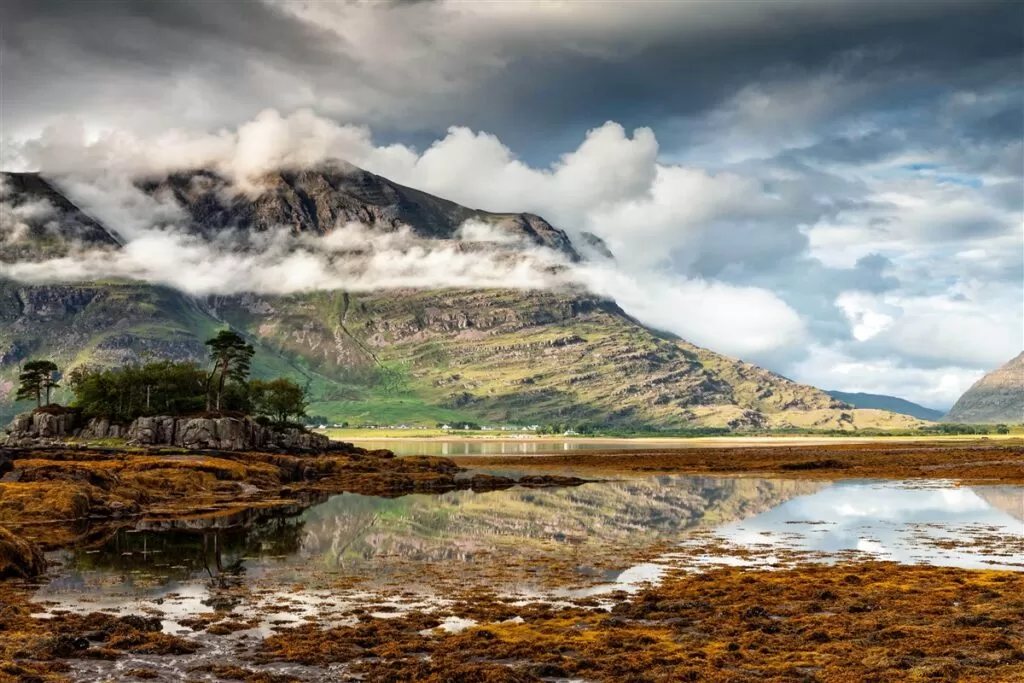
Landmarks in Scotland: Loch Torridon
Loch Torridon is a picturesque sea loch located on the northwest coast of Scotland, in the stunning Torridon area of the Scottish Highlands. This magnificent body of water stretches about 15 miles inland and is surrounded by majestic mountains, creating a breathtaking landscape that attracts nature lovers and outdoor enthusiasts from around the world.
What makes Loch Torridon truly special is its unspoiled natural beauty and tranquil atmosphere. The loch is flanked by towering peaks, including Liathach and Beinn Alligin, which provide a dramatic backdrop to the shimmering waters. The area is a haven for wildlife, with the opportunity to spot red deer, otters, and a variety of bird species.
The combination of the rugged mountains, crystal-clear waters, and lush forests makes Loch Torridon a paradise for photographers, hikers, and those seeking a peaceful escape.
To reach Loch Torridon, you can drive along the scenic A896 road, which passes through the Torridon area. The nearest town is Shieldaig, which is approximately 5 miles south of the loch. From Shieldaig, you can explore the loch by taking the single-track road that follows its shoreline.
A great place to stay at Loch Torridon is Tigh an Eilean.
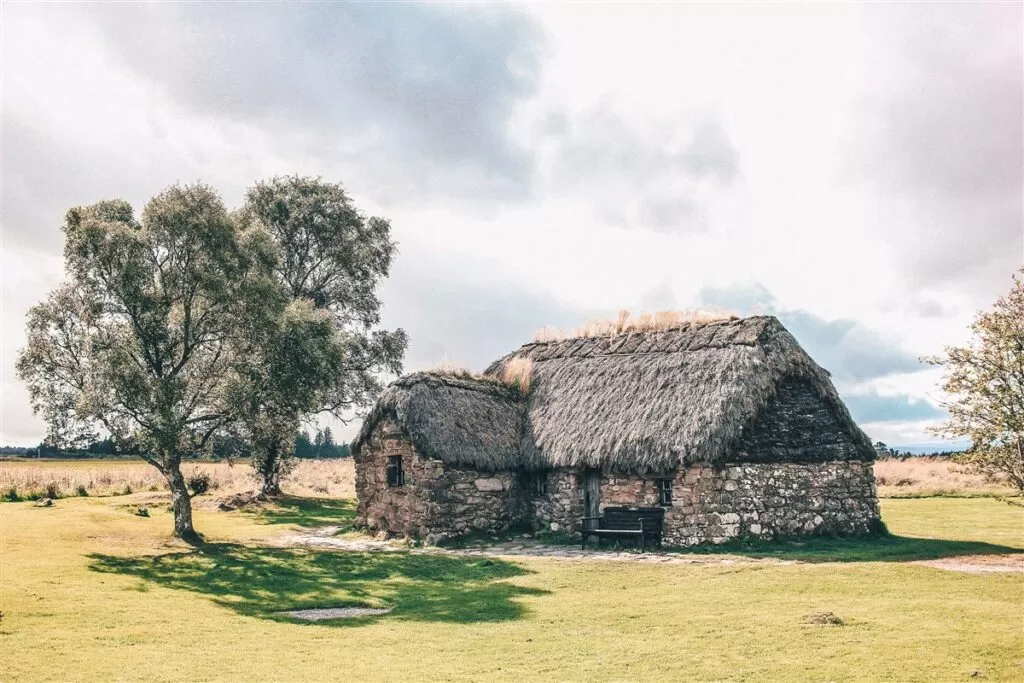
Landmarks in Scotland: Culloden Battlefield
Culloden, located near Inverness in the Scottish Highlands, is a historically significant site that attracts visitors seeking to delve into Scotland’s past. The main attraction at Culloden is the battlefield, where the Battle of Culloden took place on April 16, 1746. This battle marked the final confrontation of the Jacobite Rising, a conflict that played a crucial role in Scottish history.
At Culloden, visitors can explore the battlefield and its surrounding memorial park. The visitor center provides a wealth of information through interactive exhibits, films, and artifacts, offering insights into the events leading up to the battle and its aftermath. Walking through the battlefield itself allows visitors to reflect upon the history and significance of the conflict.
To reach Culloden, it’s easiest to travel by car or take a bus from Inverness, which is approximately six miles away. The site is well-signposted and has ample parking facilities for visitors.
For accommodation near Culloden, staying in Inverness is a convenient option. The city offers a range of accommodations, including hotels, bed and breakfasts, and self-catering apartments. There are options to suit different budgets and preferences, and staying in Inverness allows for easy access to Culloden as well as other attractions in the area, such as Loch Ness and Urquhart Castle.
A great place to stay in Inverness is The Macdonald Street Snug.
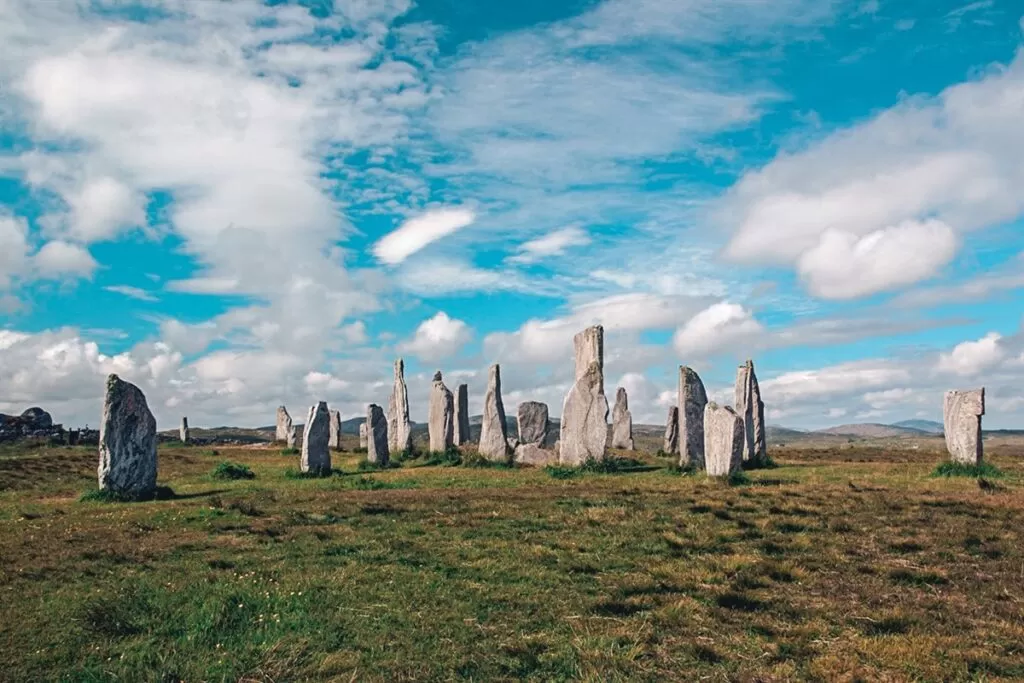
Landmarks in Scotland: Calanais Standing Stones
The Calanais stones are on the Isle of Lewis in the Outer Hebrides which is north of mainland Scotland. To get to Lewis you must either get a ferry from Ullapool to Stornoway or you can fly from Glasgow or Inverness. Flying is the quickest way to get here but also much more expensive (and arguably less exciting) than getting the ferry.
Of all the things to do on the Isle of Lewis the one must-see sight is the Calanais Stones. They are located half an hour’s drive from Stornoway in Calanais. The stones are often called the “Stonehenge of the North”. In fact, they are over 5,000 years old and predate Stonehenge.
In Calanais there are three different stone circles. Close to the largest one there is a visitor’s center that is open every day except Sunday. However, the stones are always accessible and you can walk amongst the stones and ponder why and how they came about. Nobody knows what the stones were used for. According to local legend, they are petrified giants who didn’t want to convert to Christianity.
Most people only visit the largest stone circles but don’t miss Calanais 2 and 3, which are smaller stone circles and a short walk from the main circle.
The best area to stay is in Stornoway. If your budget allows it, stay at Lews Castle, or for a more budget-friendly option, try the Royal Hotel by the harbor.
By Kristin from Scotland Less Explored
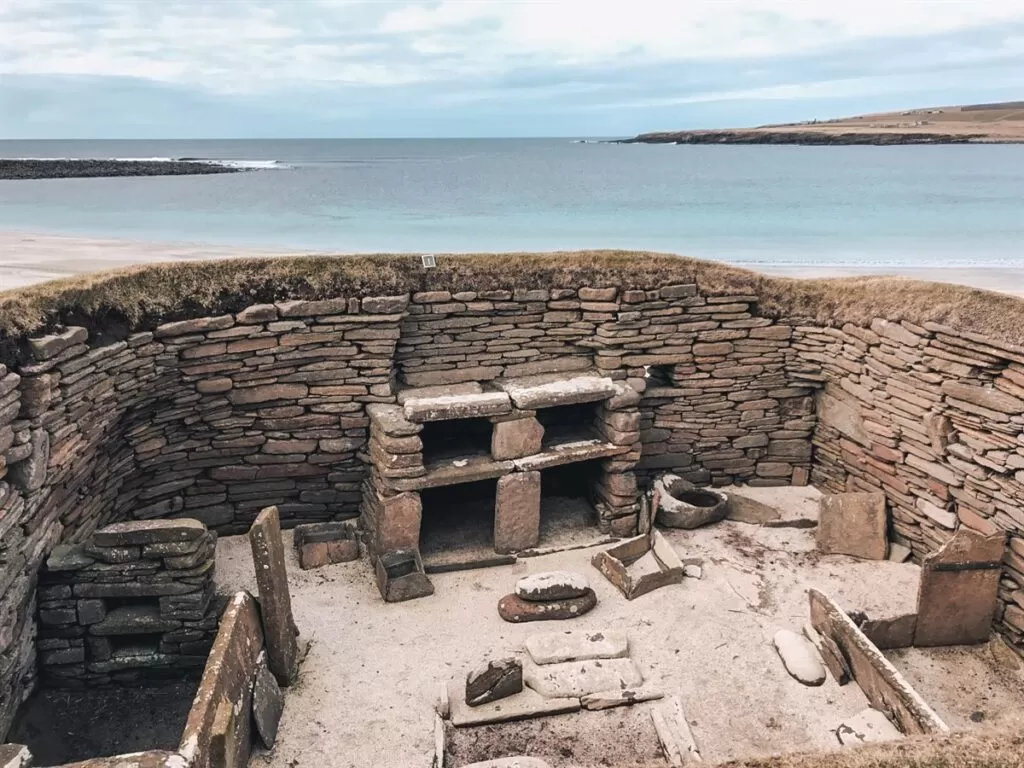
Landmarks in Scotland: Skara Brae
Skara Brae is an ancient Neolithic settlement located on the west coast of Mainland, the largest island in the Orkney archipelago of Scotland, and is a UNESCO World Heritage Site. It is considered one of the most well-preserved and significant archaeological sites in Europe, dating back over 5,000 years.
The village was discovered in 1850 after a fierce storm that battered the coastline and unearthed several prehistoric structures. Excavations began in the 1920s and revealed a complex of ten interconnected stone houses, complete with furniture, tools, and other artifacts, providing a glimpse into the daily life of the people who lived there.
What makes Skara Brae so special is that it is a remarkably well-preserved example of a prehistoric village, providing insight into how people lived, worked, and interacted with each other thousands of years ago. The site is also significant for the level of sophistication of its architecture, with houses featuring complex drainage systems, hearths, and storage spaces. These can be seen today as you walk around the remains.
To visit Skara Brae, take a ferry from mainland Scotland to the town of Stromness on Orkney. From there, it is a 20-minute drive to the site. Alternatively, you can take a bus from Kirkwall, the largest town on Orkney, to Skara Brae, which takes around 45 minutes.
Close to Skara Brae is Loch Harray. On the shoreline is the beautiful Merkister Hotel. From here it is possible to drive to Skara Brae in under 20 minutes. The hotel serves local dishes and has a reputation for its amazing breakfasts.
Suzanne from Meandering Wild
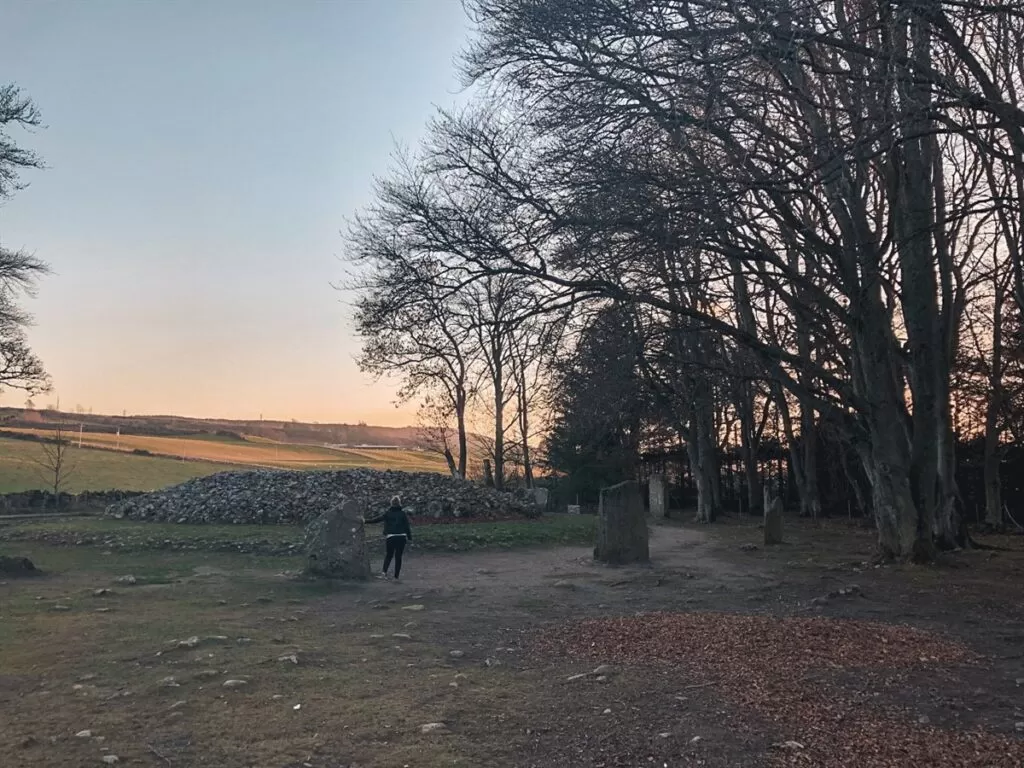
Landmarks in Scotland: Clava Cairn Standing Stones
If you’re exploring the Highlands of Scotland, don’t miss the stunning landmark that is the beautiful Clava Cairns standing stones. Located just outside of Inverness, and a few minutes walk from the popular Culloden Battlefield, these stones are a must-visit for anyone looking to explore mystical Scottish history (or, of course, Outlander fans!).
Clava Cairns, more officially known as the Prehistoric Burial Cairns of Bulnuaran of Clava, is a cemetery more than 4,000 years old. Now, multiple cairns (Scottish burial mounds) used throughout the area, can still be visited.
Though not as large as some of the other standing stones throughout the United Kingdom (they’re much smaller than Stonehenge, for example), Clava Cairns is still an impressive landmark in Scotland to visit. The clearing that houses the stones feels otherworldly, and what is most exciting is that there are no barriers to entry.
Entrance to Clava Cairns is free, and there are no ropes or gates preventing you from roaming freely around the stones.
The standing stones are easily reachable. If you’re spending any time in Edinburgh, a trip to Inverness is an easy, straight shot of a drive or a quick train trip! Stay in Inverness at the Ness Walk Hotel for a luxurious getaway!
By Taylor from Traverse With Taylor
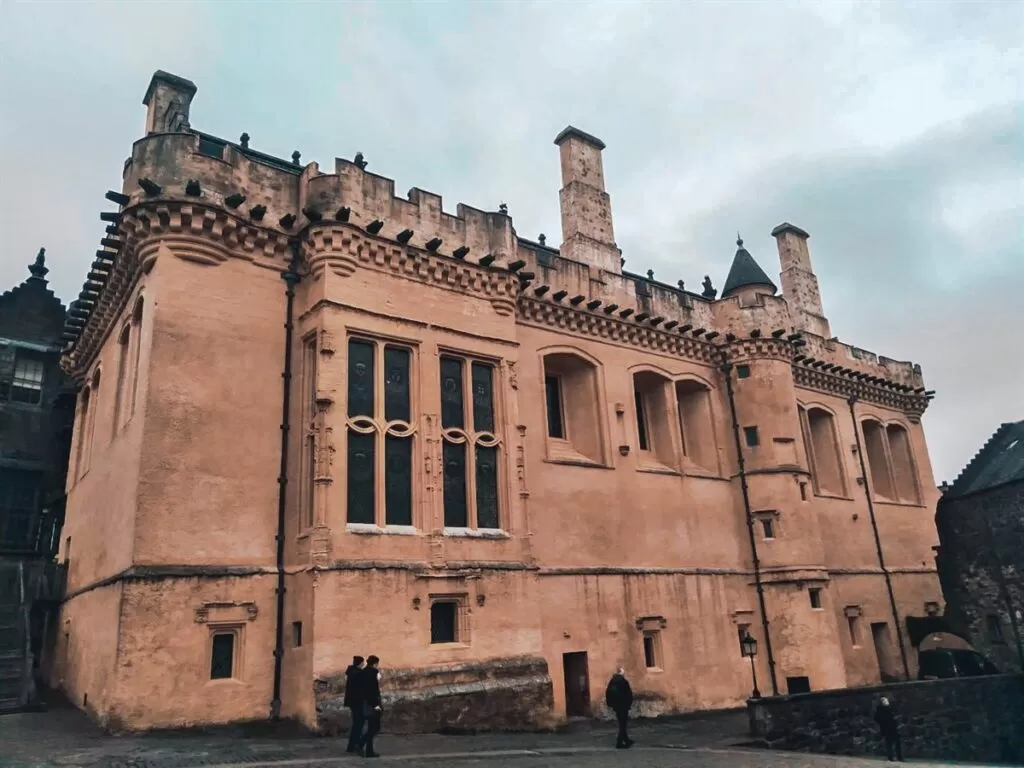
Landmarks in Scotland: Stirling Castle
Stirling Castle is a significant ancient monument in Scotland, UK. It’s located on a hilltop overlooking the River Forth. The castle was built in the 12th century as a military defense base due to its suitable geographical position.
Stirling Castle has played a massive role in historical events such as the Wars of Scottish Independence. The Battle of Stirling Bridge in 1297 and the Battle of Bannockburn in 1314 were fought here. It was remodeled in the 16th century to become a favored residence for the Stewart royal family.
The castle is among the largest in Scotland, with its numerous towers and many gardens. The architecture on the building is a work of art drawing influences from medieval, Renaissance, and modern cultures. The main highlight here is the Great Hall. This 130 ft long room features scenes from Scottish history on the walls.
The Royal Palace and Chapel Royal is a beautiful symbol of Renaissance architecture. Visitors can also see the Castle Exhibition, Regimental Museum, Great Kitchens and Tapestry Studio to learn about the rich history of Stirling. There are guided tours that will take you through every nook and corner. Take a break at the rooftop restaurant Unicorn Café or search for the perfect souvenir at one of the three gift shops on the castle ground.
You can buy a ticket online or from the castle doors. The ticket price for children begins at $10.50, and for adults, it starts from $17. Special concessions are provided to senior citizens. Southfield Bed & Breakfast is a great place to spend the night near the castle.
By Ruma from The Holiday Story
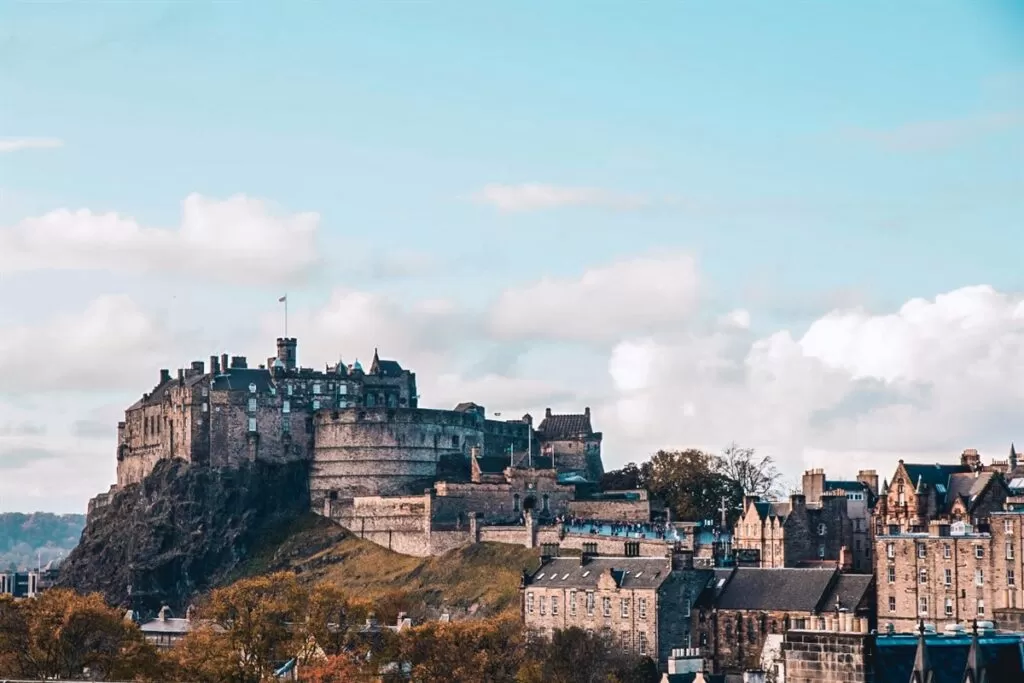
Edinburgh is one of the most beautiful cities in the UK, featuring stunning architecture and famous historic sites. Among these, Edinburgh Castle stands out as the jewel in the city’s crown and as one of Scotland’s iconic landmarks.
Perched atop the dramatic Castle Rock at the end of the historic Royal Mile, this mighty-looking fortress cannot be missed. With a history spanning over 1,000 years, the castle has witnessed countless expansions and modifications. St. Margaret’s Chapel, dating back to the 12th century, is not only the oldest building within the castle but also in the entire city.
Having played a significant role in Scottish history, Edinburgh Castle has been witness to major events like the Wars of Scottish Independence and the Jacobite Rising. Over the centuries, it has served as a royal residence, military garrison, and prison.
Today, visitors can delve into the castle’s numerous museums and exhibitions to discover the rich history of Scotland. Highlights include the medieval Great Hall with its spectacular wooden roof and the Royal Palace, once home to Scotland’s most famous historic figures.
Edinburgh Castle is also home to Scotland’s national treasures such as the Scottish Crown Jewels and the Stone of Destiny. Moreover, the castle offers breathtaking panoramic views of the city and the surrounding countryside.
For an exceptional stay near Edinburgh Castle, consider the Witchery by the Castle. This gothic boutique hotel offers nine uniquely designed rooms, each boasting sumptuous fabrics, antique furnishings, and quirky accessories. With indulgence at its core, the Witchery provides the ultimate Edinburgh experience, complete with roll-top baths for two.
By Ksenia from Explore With Wonder
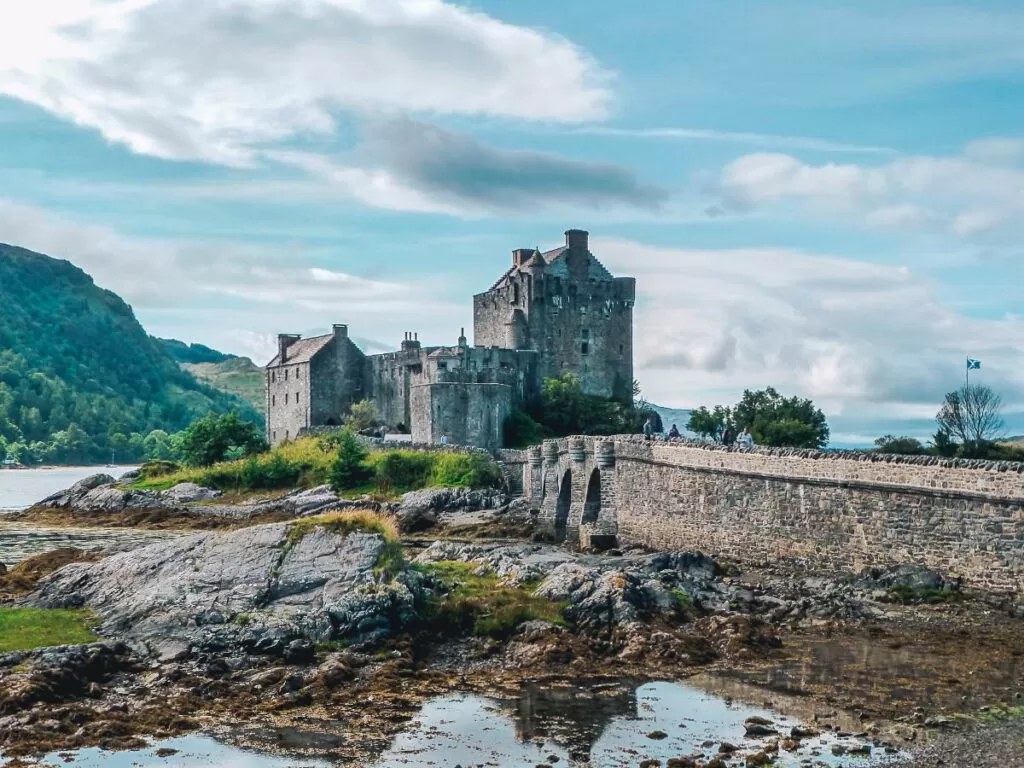
Landmarks in Scotland: Eilean Donan Castle
Eilean Donan castle is one of the most photographed and well-known of Scotland’s landmarks, almost always gracing the front of a postcard or a guidebook. It’s also well known for being a filming location in the classic movie Highlander.
While there has been a castle on this amazing spot for hundreds of years, the current one is much newer than might be expected having been in complete ruin at the beginning of the 1900s. It has been restored only recently to what can be seen now.
The stunning landscape around the castle is what draws photographers, artists, and tourists alike. Eilean Donan castle is situated on a small tidal island (Eilean is Gaelic for “island”) and is surrounded by 3 lochs. The hills roll around in the distance and it feels like a classic, peaceful, and serene Scottish highland destination. Visitors can explore inside the castle, and the visitors’ center, or take to the footpaths and go for a walk around the area to get unique viewpoints of the castle.
Eilean Donan castle can be found on the west coast of Scotland and is on the main A87 road that heads towards the Isle of Skye. There is plenty of parking for some time exploring. It’s easy to combine both the castle and the Isle of Skye for those doing day trips from Inverness or Fort William.
Alternatively, if accommodation is required by the castle then check out The Dornie Hotel in the nearby village of Dornie.
By Kirsty from Lost in Landmarks
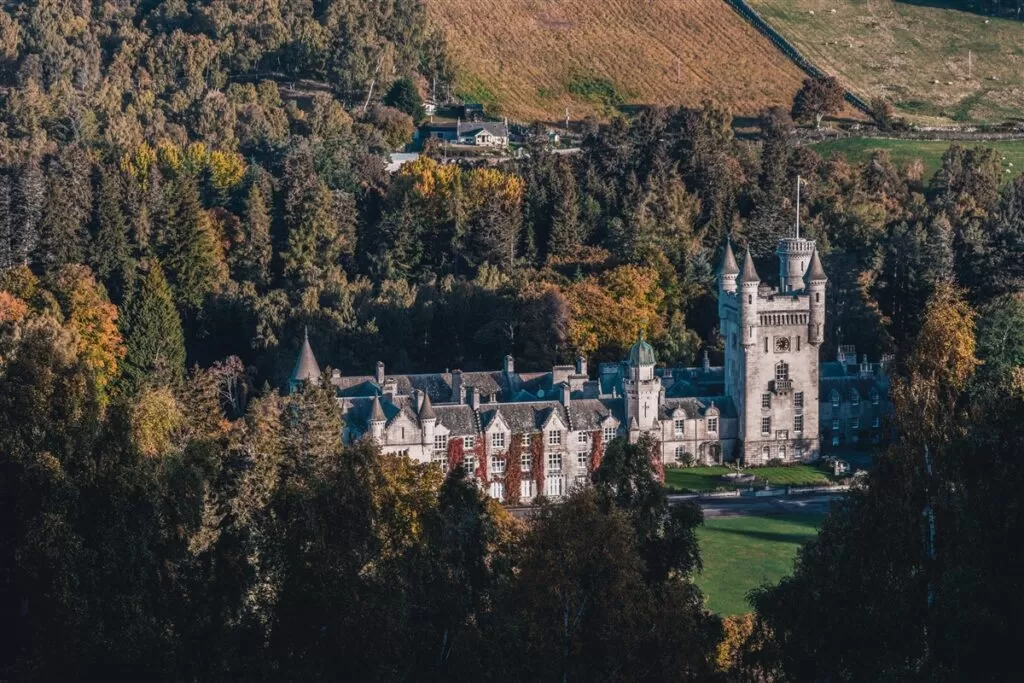
Landmarks in Scotland: Balmoral Castle
Balmoral Castle, nestled in the picturesque Scottish Highlands, holds a special place in the hearts of the British royal family. This enchanting castle, located near the village of Crathie in Aberdeenshire, Scotland, has been a beloved retreat for generations. It was famously the favorite residence of Queen Elizabeth II, who frequently spent her summers there.
Balmoral Castle, with its stunning architecture and breathtaking surroundings, offers a glimpse into the royal heritage of Scotland. The castle sits amidst vast estates, including beautiful gardens, woodlands, and the rushing River Dee. Visitors can explore the castle’s grounds, which are open to the public during certain periods of the year, and learn about its rich history and royal connections.
To reach Balmoral Castle, you can travel by car or public transportation. The castle is approximately 1.5 hours by car from Aberdeen, the nearest major city. Alternatively, you can take a train to nearby stations such as Aberdeen or Ballater and then arrange for local transportation to the castle.
For those seeking accommodation near Balmoral Castle, the charming village of Ballater offers a range of options. Located just a short distance from the castle, Ballater is known for its hospitality and traditional Scottish charm. The Gordon Guesthouse is a great place to stay.
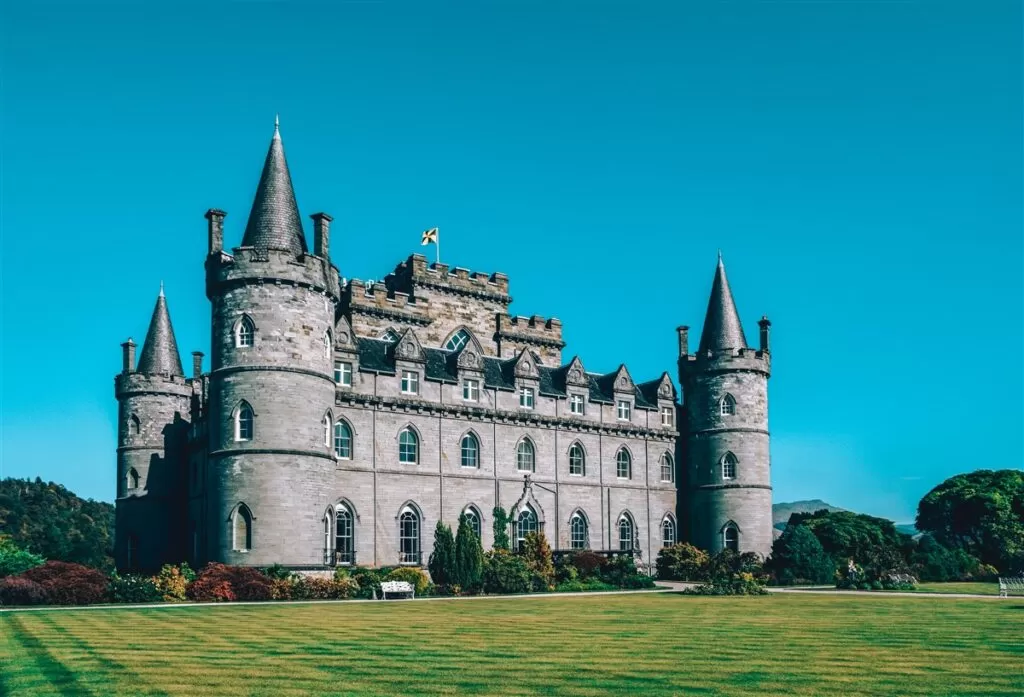
Landmarks in Scotland: Inveraray Castle
Inveraray Castle, a magnificent piece of Scottish baronial architecture, is a true gem located on the western shore of Loch Fyne in Argyll, Scotland. This iconic castle stands proudly amidst beautiful gardens and lush woodlands, presenting a captivating sight for visitors. Its distinctive turrets, towers, and battlements create a fairy tale-like atmosphere that transports you back in time.
Situated in the town of Inveraray, the castle is easily accessible by road. It is approximately an hour and a half drive from Glasgow, making it a popular day trip destination. The scenic journey takes you through the stunning Scottish countryside, allowing you to soak in the natural beauty of the area.
To reach Inveraray Castle, you can follow the A83 road, which connects Glasgow with Inveraray. Once you arrive in Inveraray, the castle is within walking distance from the town center.
For a delightful stay near Inveraray Castle, the nearby Inveraray town offers several charming accommodations. One such option is the George Hotel, located right in the heart of the town. Its central location allows for easy exploration of Inveraray Castle, as well as other attractions in the area.
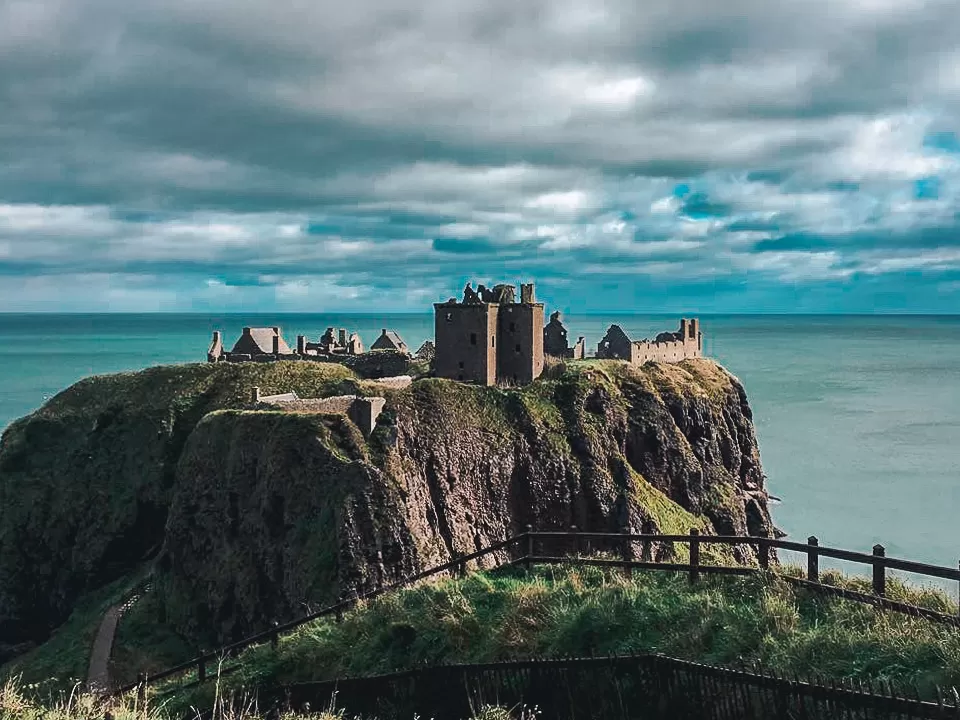
Landmarks in Scotland: Dunnottar Castle
Dunnottar Castle is a medieval fortress located on the northeast coast of Scotland, near the town of Stonehaven. It is perched on a rocky cliff, overlooking the North Sea and has been described as one of the most iconic landmarks in Scotland. The castle’s strategic location made it a vital stronghold for centuries and has played a key role in Scotland’s history.
The castle dates back to the 14th century and was once the home of the Earls Marischal, one of the most powerful families in Scotland. Dunnottar Castle is now a popular tourist attraction, visited by thousands yearly. It is renowned for its stunning views, dramatic setting, and rich history.
One of the best places to stay when visiting Dunnottar Castle is the Arduthie House in Stonehaven. This charming hotel offers comfortable rooms and excellent food. The hotel is just a few miles from the castle and is a great base for exploring the surrounding area.
To get to Dunnottar Castle, visitors can take a train to Stonehaven from Aberdeen, just a short journey away. From Stonehaven, the castle is a short walk or taxi ride away. Alternatively, visitors can drive to the castle and park in the nearby car park.
By Victoria from Guide Your Travel
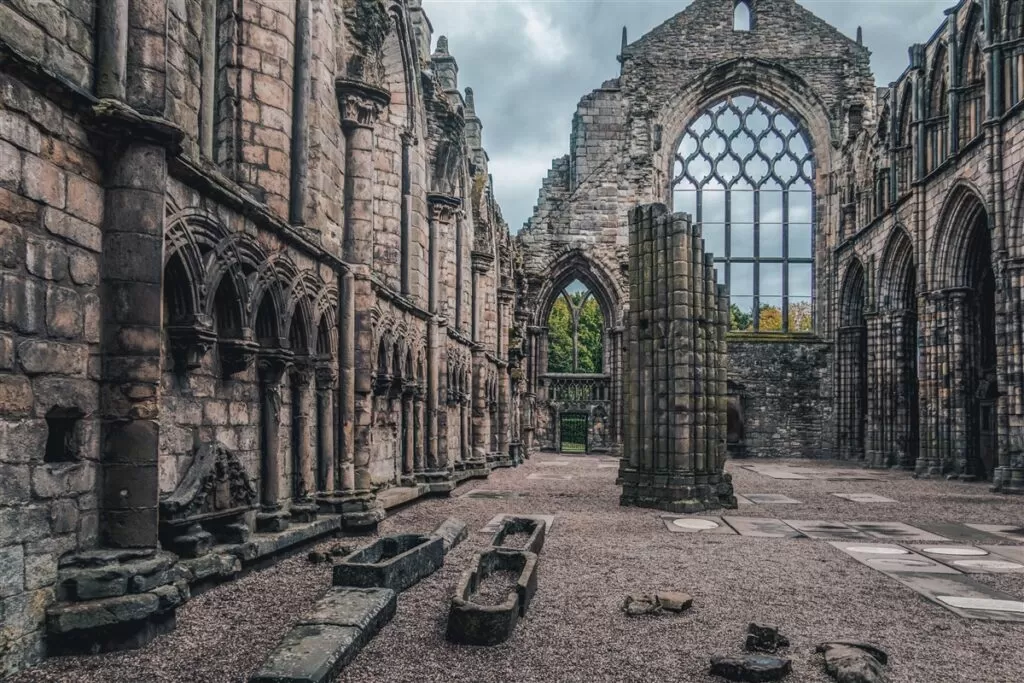
Landmarks in Scotland: Holyrood Palace
The Palace of Holyroodhouse, located in the heart of Edinburgh, Scotland, is a place of historical significance and regal charm. Situated at the eastern end of the Royal Mile, this magnificent palace has a rich history and serves as the official residence of the British monarch in Scotland.
The history of the palace dates back to the 12th century when it was founded as an Augustinian abbey. Over the centuries, it evolved into a royal residence, witnessing numerous significant events and hosting royalty from around the world. Today, it continues to be a working palace, hosting official functions and offering visitors a glimpse into its royal past.
Adjacent to the palace stands the evocative ruins of Holyrood Abbey, which was founded in 1128. These ancient remains, with their Gothic architecture and atmospheric ambience, add to the allure of the site.
To reach the Palace of Holyroodhouse, visitors can easily access it by foot from Edinburgh’s city center. It is a short walk from popular landmarks such as Edinburgh Castle and the Scottish Parliament. Alternatively, public transportation options, including buses and taxis, are readily available.
For those seeking accommodation nearby, there are several options within walking distance of the palace. The Museum Appartments in Chambers Street are a great choice.
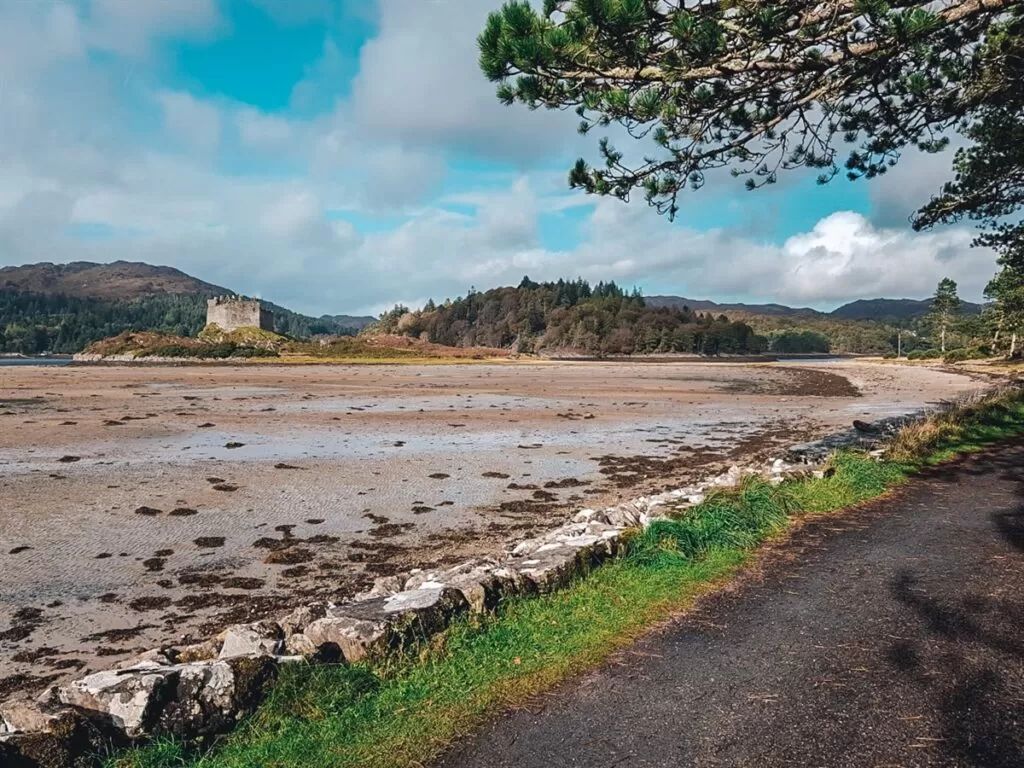
Landmarks in Scotland: Castle Tioram
Hidden away in rugged Moidart, Castle Tioram is one of the best places to visit in the West Highland Peninsulas of Scotland. This photogenic crumbling castle sits on a tiny tidal island, overlooking a particularly beautiful estuary. Tioram was built in the 13th century as a strategic stronghold to protect the waterways of this part of the western highlands. Home to several clan chiefs over the centuries, the castle saw its fair share of battles, intrigues, and even piracy.
You can only visit the island at low tide, so make sure you check the tide times before visiting. When the water recedes, you can cross the sandy beach and scramble up to the castle ruins. It’s a great place for exploring and picnicking, and the views across the water are incredible. If you miss the low tide, don’t worry. You can still visit the beach and see the castle from across the water.
You’ll need a car to get there as it’s pretty remote. Tioram Castle can be accessed by road from Fort William via the A830 and then the A861. The last stretch of road is a single track, and there’s a free car park at the end overlooking the beach.
Nearby, the Loch Shiel Hotel is a convenient base for your explorations, or further north the Glenuig Inn is another popular choice. This area is full of castles, lochs, and hills to discover. It’s far from the crowded Highlands so is a great place to visit if you’re seeking a bit of Scottish serenity.
By Heather from Conversant Traveller
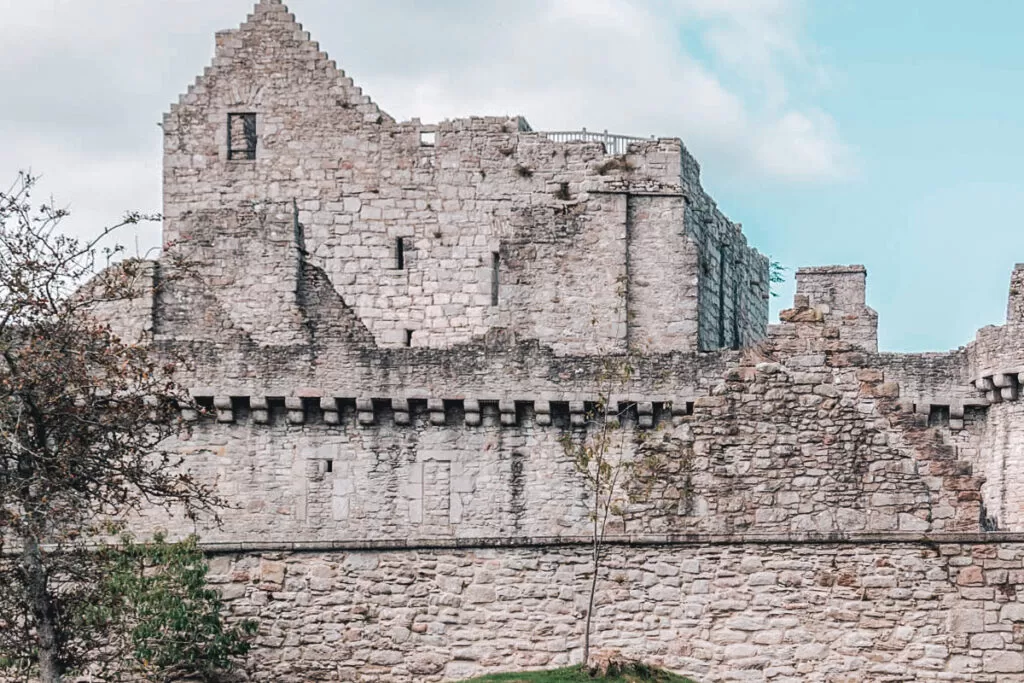
Landmarks in Scotland: Craigmillar Castle
One of the most iconic landmarks in Scotland is Craigmillar Castle. It is located in the country’s capital and a must-visit on any Edinburgh itinerary.
Craigmillar Castle is considered to be one of the best-preserved castles in Scotland. Visitors who visit are often enamored by the history that resides here. Since the castle lies just outside the main city, it is often way less crowded than other tourist attractions in Edinburgh, and you can often feel as if you have the castle to yourself.
The castle was first built in the 15th century and has had a fascinating story throughout the next 250 years. One of the most prominent stories is how Mary Queen of Scots fled to the castle after the murder of Rizzio.
It is also a filming location for the popular series Outlander, which has made the castle gain popularity.
Some of the best locations within the castle to visit are the traditional rooms, balconies, prison cells, and cellars for a magical look into the wondrous history that is present here. There are also scenic gardens and pastureland that surround the castle to explore.
Once you climb to the top of the castle, you will be greeted with panoramic views of Edinburgh. Furthermore, there are walking trails along the castle to enjoy afterward.
Remember to wear comfortable shoes as there are winding stairs and uneven floors, which adds so much character to the castle.
There are parking spaces available at the castle, so you can choose to drive. If you don’t have a car, you can easily take an Uber from Edinburgh’s city center. Buses are also easy to access. The bus routes take visitors approximately ½ mile walk away from the castle.
Adult admission prices are £7.50 per person.
A great place to stay close to the castle is Barony House, which is a 5-star B&B and Guest House. This accommodation has free parking and is a short walk away from a number of popular attractions in Edinburgh.
By Sam from Find Love and Travel
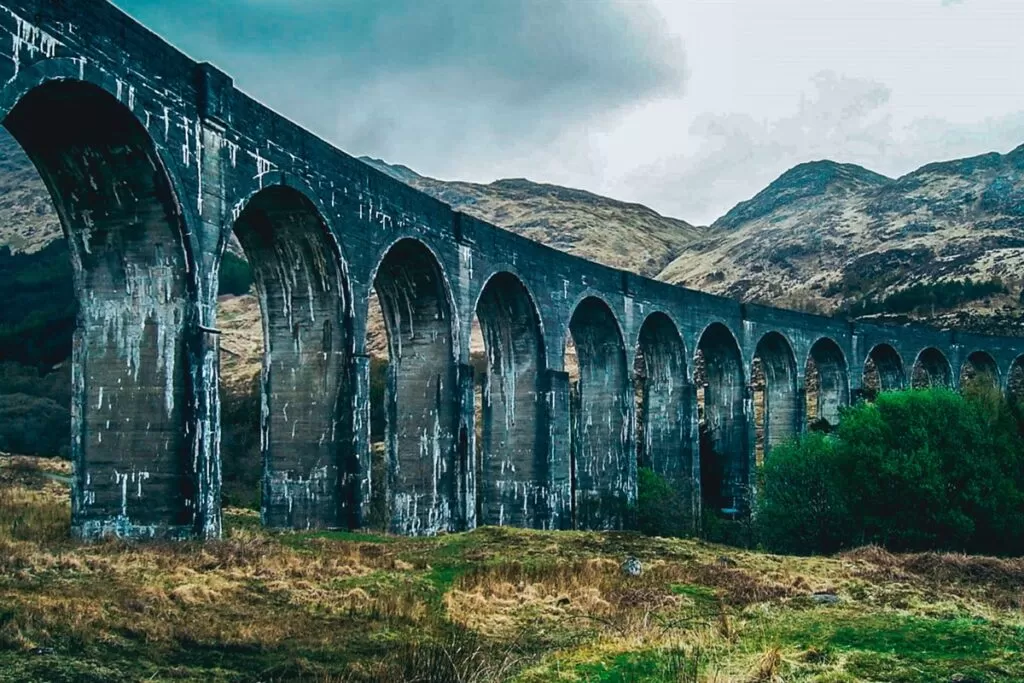
Landmarks in Scotland: Glennfinnan Viaduct
While it is not easily recognized by its name, this magnificent stone bridge is instantly recognizable to those acquainted with a particular wizardling franchise. Located in the west of the Scottish highlands near Fort William is the Glenfinnan Viaduct. This bridge was built in the middle of an imposing green valley typical of the North of the country, crossing the river of the same name at the heart-stopping height of 30 m.
Travelers coming all the way here don’t want to miss this location’s best picture opportunity: the scenic sight of the Jacobite Steam Train when it passes over the viaduct. This enchanting tableau takes place every day at 10:45 am and 3:15 pm.
Public transport in this region of Scotland is pretty poor. Therefore, the best way to get to the famous overpass is to have your own wheels. Once there, the Glenfinnan Viaduct viewpoint offers an unbeatable view of the landmark and is accessible by a short walking trail.
Another great way to experience this part of the Highlands is to ride the train across the bridge. (This is the ideal way to visit for travelers without access to a car.) Departing from nearby Fort William, ScotRail trains actually stop just after the viaduct at Glenfinnan Station.
Fort William is the place to stay to have easy access to this tremendous Scottish landmark. Besides the town’s many quaint BnBs, the quintessential highland hospitality can be found at the regal Inverlochy Castle Hotel.
By Iphi from Travel Choreography
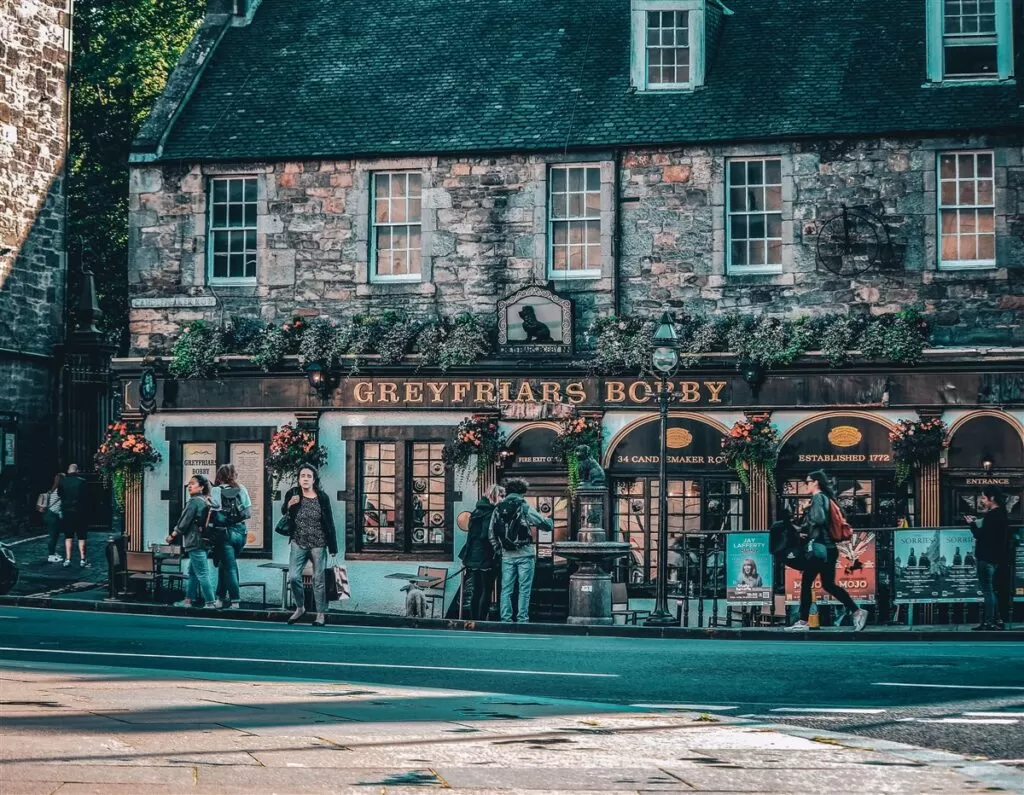
Landmarks in Scotland: Greyfriars Bobby
Greyfriars Bobby is an endearing and iconic statue located in Edinburgh, Scotland. The statue commemorates a loyal Skye Terrier named Bobby, who became famous for faithfully guarding his owner’s grave for 14 years in the 19th century.
The statue of Greyfriars Bobby can be found near the entrance of Greyfriars Kirkyard, a historic cemetery in the Old Town of Edinburgh. The statue depicts the little dog on a fountain, symbolizing his unwavering loyalty and devotion.
To reach Greyfriars Bobby statue, you can easily navigate to the intersection of George IV Bridge and Candlemaker Row in the city center of Edinburgh. The statue is a short walk from popular attractions such as the Royal Mile and Edinburgh Castle. You can also visit his grave and that of his owner John Grey, at the Greyfriars Kirkyard.
For a pleasant stay nearby, consider accommodations in the Old Town or Grassmarket area, both of which are within walking distance of the statue. The Museum Appartments on Chambers Street is a great choice.
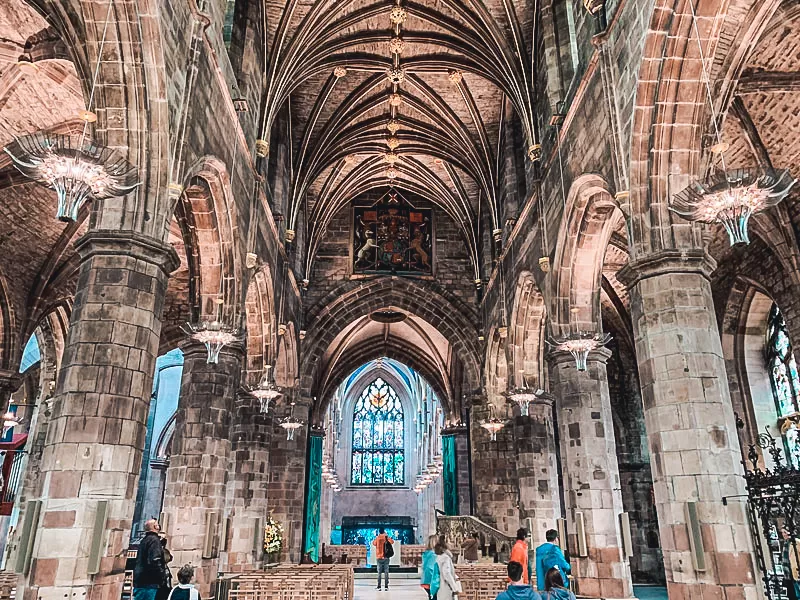
Landmarks in Scotland: St. Giles Cathedral
The St Giles Cathedral is Scotland’s most important religious building now and then. The history of Scotland and its religious and political struggles are all tied to the St.Giles Cathedral.
1560 marked the year when John Knox led the Reformation movement in Scotland and St Giles Cathedral was then turned into a Presbyterian church. The church, however, has been around much longer, as it was built over 900 years ago.
Rib vaulted ceiling and stained-glass windows add a certain mysterious atmosphere to the interior of the building. The most stunning corner of the cathedral is the neo-Gothic Thistle chapel belonging to the knights of the Thistle. The knights of the Thistle, which includes some notable personalities in the country, meet in this chapel whenever a new member is added to the order.
Visitors can also join a free guided tour, which is highly recommended, to learn more details about the St Giles Cathedral, and its historical links to Scotland. St Giles sits right at the core of the old town in Edinburgh along The Royal Mile, near other famous landmarks such as Cockburn Street and Edinburgh Castle.
It’s a must-see that you shouldn’t miss when in Edinburgh. The Inn Place, a former 19th-century publishing office turned hotel, is located in the neighborhood and offers comfortable centrally located stays.
By Paul from Paulmarina
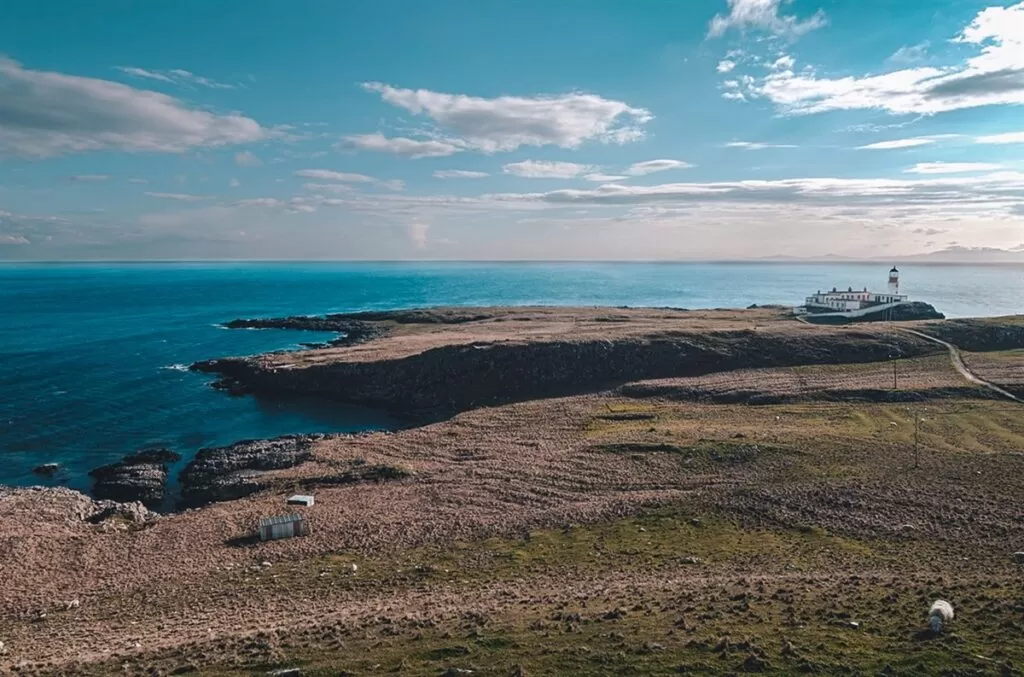
Famous landmarks Scotland: Neist Point Lighthouse
Located on the westernmost point of Skye, the Neist Point Lighthouse is a beautiful, historic attraction to explore. It is one of the most popular and famous sights on Skye to visit. Originally built in 1909, the 62-foot lighthouse still keeps watch over the rugged waters of the coast to this day.
While at present the lighthouse is automated, the lighthouse keepers used to live in cottages located near the site. These days they are empty but they also have been rentals at one point.
Getting to the lighthouse is an adventure in itself. While the journey to Neist Point Lighthouse is scenic, it’s important to note that the road leading there is narrow, single-track in some sections, and can be quite challenging, especially for larger vehicles. There are definitely some hair-raising moments getting out there, but that is part of the adventure too!
Once you get to the parking area, you’ll continue about 1 kilometer to the lighthouse itself. The green landscape and occasional sheep do make it an even more picturesque Scottish location.
Be sure to dress well! It can be rainy and it tends to be very windy when visiting. Leave an umbrella at home, but wear some good layers and a waterproof windbreaker instead.
Neist Point is located about 11 miles from Dunvegan on the Isle of Skye. A perfect place to stay is Carters Rest Guesthouse in Milovaig, about four kilometers from the Lighthouse.
By Anwar from Beyond My Door
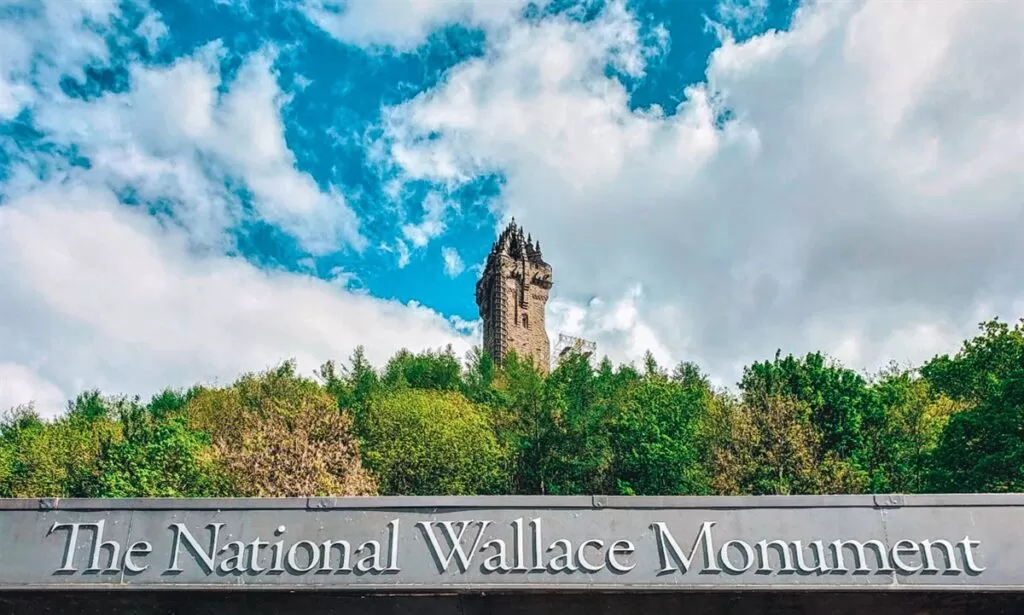
Landmarks in Scotland: The National Wallace Monument
The National William Wallace Monument in Stirling is one of the most unique and recognized landmarks in Scotland. This rugged Gothic Revival tower overlooking the town of Stirling looks like something straight out of Game of Thrones.
The monument was built to honor William Wallace, one of Scotland’s most revered heroes. Although considered a historically inaccurate film, many are familiar with Wallace who was portrayed by Mel Gibson in the movie Braveheart. The real Sir William Wallace was a 13th / 14th-century knight who was a champion for Scottish independence from the English, who he defeated in the battle of Stirling Bridge. The battle site can be seen from the top of the tower.
Stairs spiral their way 246 steps up the 220ft 17th-century tower. At the top visitors are treated to panoramic views of the lovely Scottish countryside. The top of the tower is referred to as “the crown” and processes intricate and interesting architecture.
In your race to get to the top don’t forget to stop at the various museum exhibits along the way. Explore The Hall of Arms, The Hall of Heroes, and The Royal Chamber. Highlights include a sword owned by William Wallace and interactive displays. The rooms contain beautiful stained glass windows depicting Wallace and other Scottish heroes.
The Wallace Monument is open all year round and is less than 4 km from Stirling Castle so both can be easily toured on the same day. It is located less than 4 km from the Stirling Train Station. Taxis are readily available at the station and frequent buses run between the two.
The Stirling Court Hotel has a view of the Monument.
By Angie from Were Not In Kansas Anymore
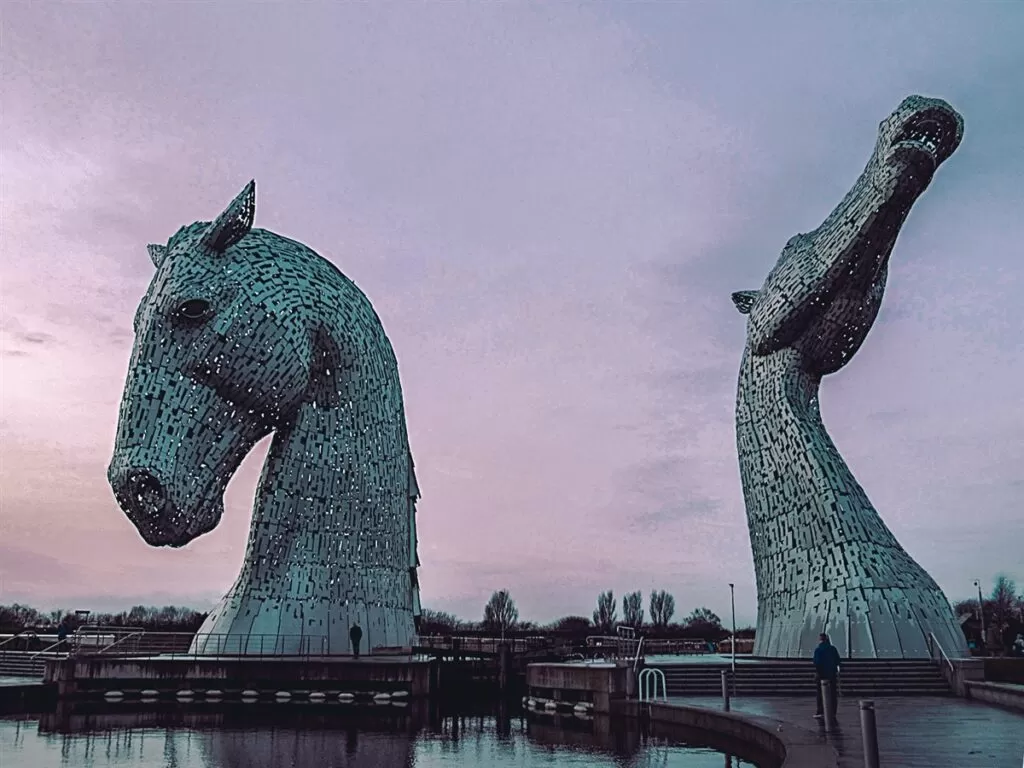
Landmarks in Scotland: The Kelpies
At 30 meters tall and weighing 300 tonnes each, The Kelpies are truly remarkable and impossible to miss. Built in 2013, these giant horse heads are a monument to the era of horse-powered industries in Scotland.
As well as being able to walk around the statues, visitors have the opportunity to take a tour inside. Where you’ll be able to climb up inside the hollow structures and get a unique view. Tours run all year round and can be booked online.
Onsite there’s a visitor centre with a gift shop and cafe. Plus, there’s lots of seating and green space to relax and take in the special sight.
The Kelpies are positioned next to the Forth and Clyde Canal in Falkirk. Which is a town located midway between Edinburgh and Glasgow. And it’s easy to visit from both cities as a day trip or part of a longer Scotland road trip.
The nearest hotels are The Grange Manor and Premier Lodge (not to be mistaken with the popular chain Premier Inn). Additionally, parking is available at The Kelpies for a small fee – the car park is a short walk through the park to the statues.
And there are good transport links with the rest of Scotland, especially since the M9 motorway runs right next to the site. The nearest train station, Falkirk Grahamston, is just 2 miles away.
By Zoe from Zoe Goes Places
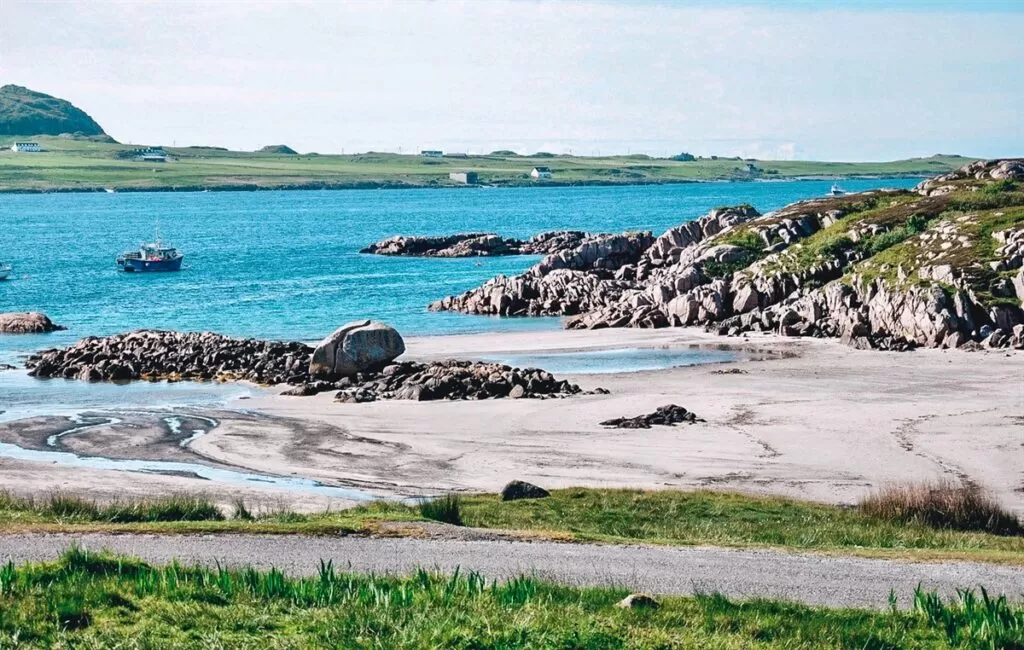
Landmarks in Scotland: Isle of Mull
Located off the west coast of Scotland, the Isle of Mull is the fourth largest in the whole of Britain and the second largest island of the Inner Hebrides of Scotland. Caledonian MacBrayne operates the popular ferry route from Oban (Mainland) to Craignure (on the Isle of Mull), with a journey time of 45 minutes.
For such a compact island, the Isle of Mull is packed with interesting attractions and adventures for every age. From sparkling lochs, hidden beaches, 300 miles of coastline to myriad thriving wildlife, all waiting to be explored.
A large percentage of the island’s population lives in the capital Tobermory. Walk along Tobermory waterfront admiring the colorful lined-up houses. Tobermory is also home to one of the 2 distilleries on the Isle of Mull – Tobermory distillery.
You can go to Iona island, which is only 1 mile away from Mull’s coast. Take a 10-minute ferry ride from Fionnport and visit the famous Iona Abbey and Nunnery, known for its spiritual retreats.
There are plenty of powdered sandy beaches on the Isle of Mull that cannot go unnoticed. Calgary Bay, located on the northwest coast of Isle of Mull, is one such amazing beach that one can easily mistake for the Caribbean.
The Isle of Mull is probably one of the perfect choices in Scotland to experience wildlife. Grab your binoculars and you can spot golden eagles, puffins, deer, otters, whales, or dolphins. It is truly a haven for wildlife enthusiasts. What’s more, there are also plenty of highland cows that one can spot here.
A great place to stay is Killoran House in Dervaig.
Contributed by Anuradha from Country Hopping Couple
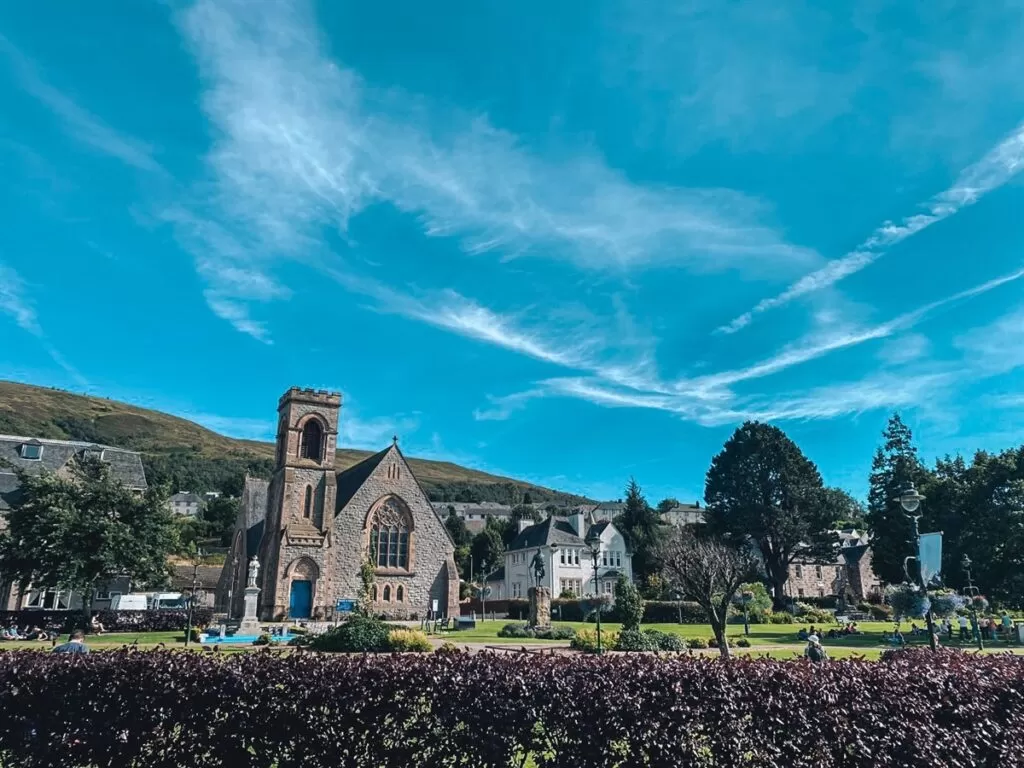
Landmarks in Scotland: Forth William
Fort William is a popular stop for visitors touring Scotland. Situated in the west, it is best known as the end of the West Highland Way, a 96-mile hike which takes you along loch sides, across moors, and through glens and mountains. It’s also the start of a 71-mile Great Glen Way walking/cycling route to Inverness.
The West Highland Railway Line is another popular reason to visit Fort William. The Jacobite Steam Train leaves for Mallaig twice a day in the summer, offering fantastic scenery. Of course, you can also take the normal train and save a bit of money, however, riding the ‘Hogwarts Express’ can be fun!
Fort William High Street is a pedestrian precinct with various shops where you can pick up plenty of souvenirs or items you might need for your onward journey. In addition, it has a good range of places to eat, a nice park and the West Highland Museum.
Just a few miles north of the town is Ben Nevis, the highest mountain in the UK. Take the gondola up Aonach Mor and enjoy the gorgeous views and a mountain walk or come down on the mountain bike trail. In the winter, you can ski in the Nevis Range
Fort William is the Outdoor Capital of the UK, and if you’re looking for adventure, you can go white water rafting, kayaking on the loch, paddle-boarding and more, or try something more relaxing like a cruise on the loch.
This scenic town has an abundance of hotels, guest houses, and hostels. Ashburn House is an excellent option for a friendly family-run guest house with stunning views over Loch Linnhe.
By Alison from Everything Arisaig
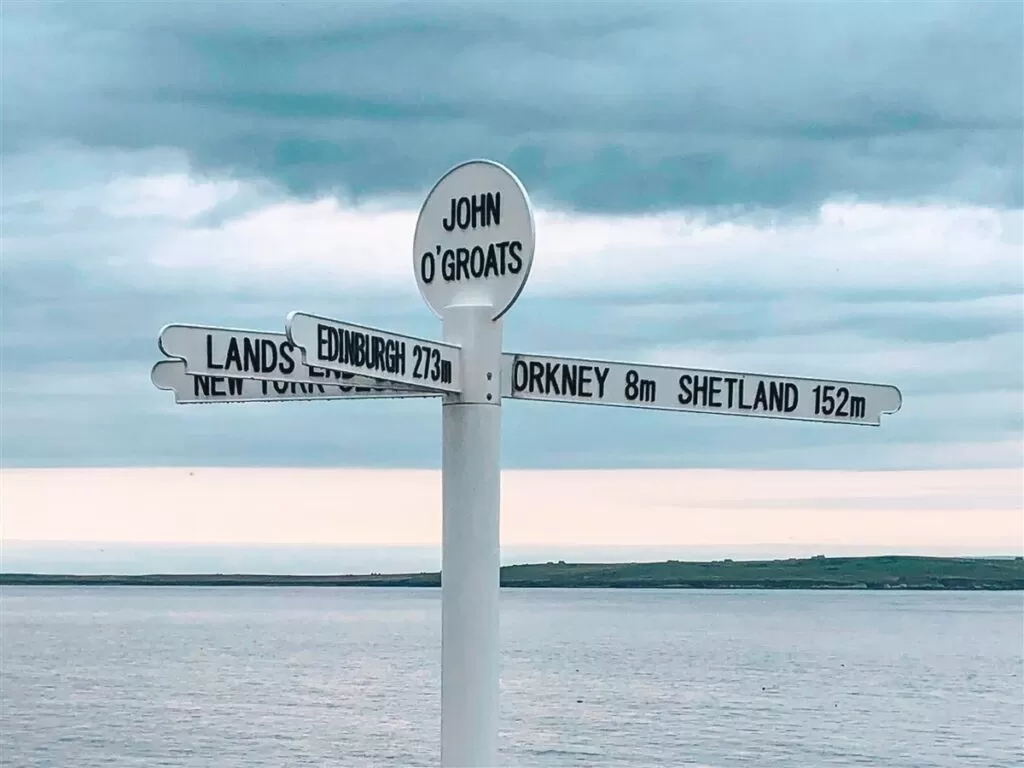
Scottish Landmarks: John o’Groats
John o’ Groats is one of the most famous Scotland landmarks, marking the northeast end of the island of Great Britain. Although it’s not quite the most northerly point of the mainland, it is the starting point for the ‘End to End’ journey to Land’s End in Cornwall, traveling the length of Great Britain on a 837-mile road trip.
As this landmark is in such a remote location it’s a great place to get breathtaking views out over the ocean and to spot local wildlife including, if lucky, dolphins and orcas. Take photos by the John o’ Groats sign, view the Nomadic Boulders sculpture, and look out over the water towards the Orkney islands. There are a couple of shops by the parking area, including an independent brewery, for souvenirs and refreshments.
Although there are a few places to stay in John o’ Groats itself, the town of Thurso is just a 30-minute drive away and has more options. The Park Hotel is a great choice, but book early especially if visiting in the summer as accommodation is limited so far north.
It is possible to get to Thurso and John o’ Groats by train and bus, but it’s a very lengthy journey so driving is recommended. The famous NC 500 driving route passes directly through the town of John o’ Groats – simply follow the signs in the town to find the parking area.
By Fiona from Following Fiona
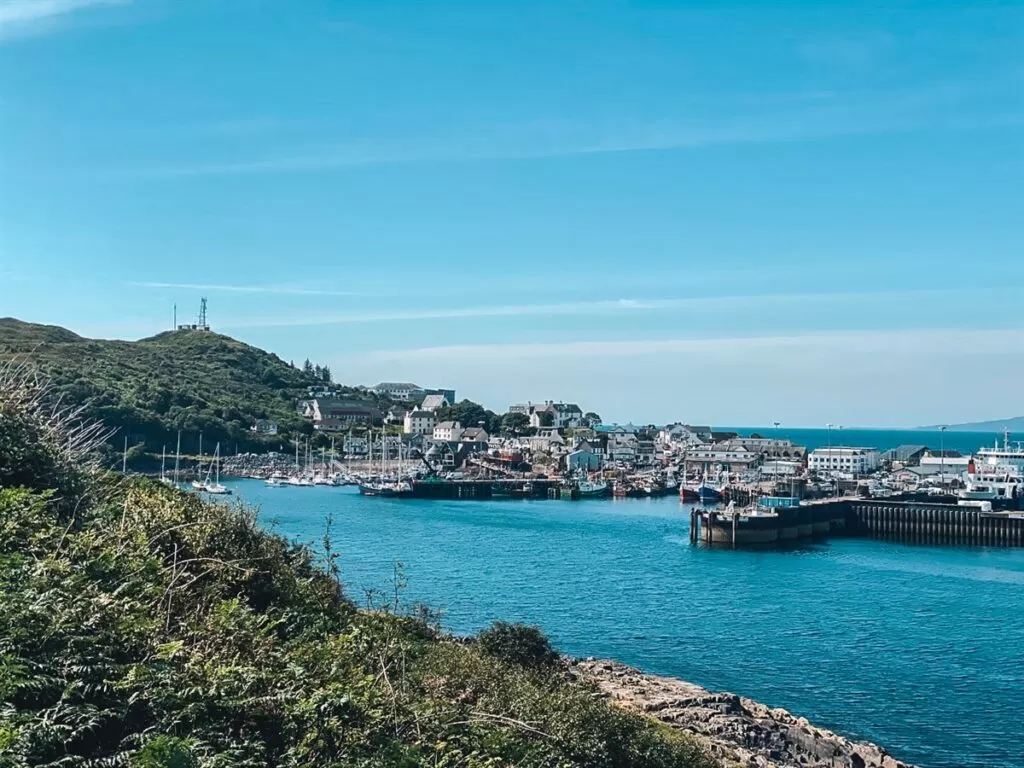
Landmarks in Scotland: Mallaig
A scenic village on the West Coast, Mallaig is the end of the Road to the Isles. The busiest fishing port in the west, Mallaig is also where you catch a ferry to the Small Isles, South Uist, Knoydart, and Skye.
To get there, take the West Highland Railway from Fort William (make sure you get a window seat for the stunning scenery!) or by car or bus on the A380. If you’ve booked the Jacobite Steam Train, aka the Harry Potter Train, Mallaig Station is the last stop, and you’ll have a few hours to spend in the village.
Mallaig has plenty of places to eat tasty freshly-caught seafood, cakes, afternoon tea and more. My top choices are eating takeaway fish and chips from The Cornerstone in the harbour followed by whippy ice cream, or lunch in The Tea Garden opposite.
No trip to Mallaig is complete without a wildlife cruise. Watch seals basking on rocks and look for porpoises, dolphins and birds galore.
For HP fans, a visit to Haggard Alley, a small but well-stocked shop full of accessories essential for every self-respecting wizard, is a must. Nature lovers can walk across the hills, and history buffs might like to visit the Road to the Isles Centre.
You’ll be spoilt for places to stay in Mallaig and nearby Morar and Arisaig, but it’s a very popular area, so book well in advance. My top tips include Mallaig Glamping Pods in the village or away from the main road at The Wee Lodge in Bracara. Both have stunning views.
By Alison Watt of Everything Arisaig
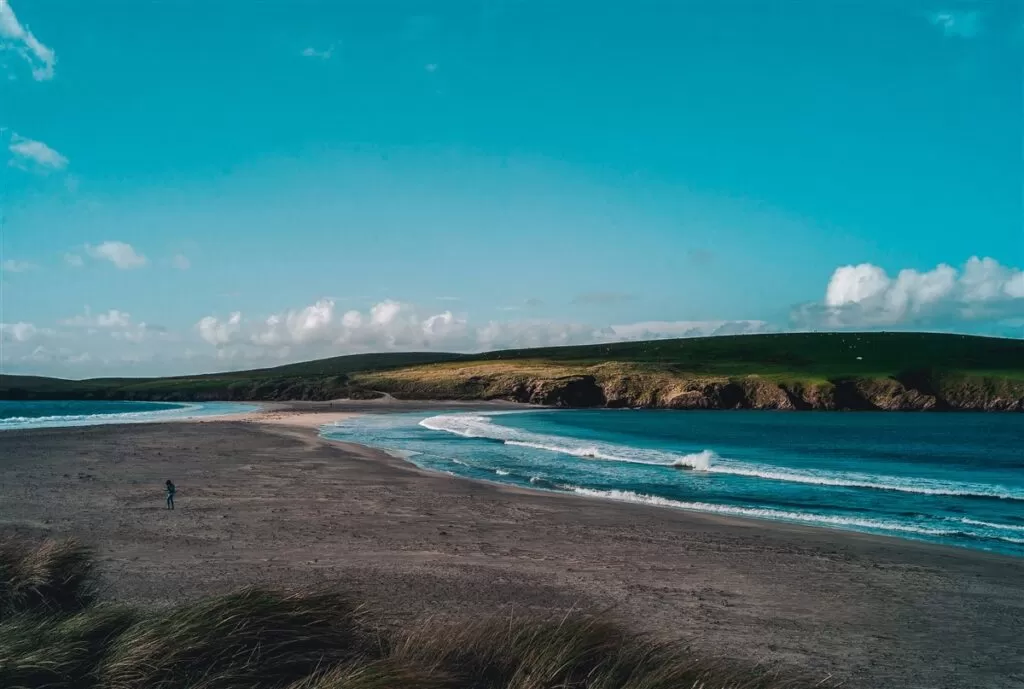
Famous Scotland Landmarks: The Shetland Islands
The Shetland Islands, located off the northeast coast of Scotland, form an archipelago of about 100 islands, of which only 16 are inhabited. These islands boast a unique and captivating beauty, characterized by rugged coastlines, dramatic cliffs, and rolling green hills.
The Shetland Islands are known for their stunning landscapes, abundant wildlife, and rich cultural heritage. From picturesque fishing villages to ancient archaeological sites, there is something for everyone to explore and appreciate. The islands are also home to a variety of bird species, including puffins, as well as seals and otters.
To reach the Shetland Islands, one can take a flight from major Scottish cities like Aberdeen, Glasgow, or Edinburgh to Sumburgh Airport, located on the southern tip of the mainland. Alternatively, a ferry service operates from Aberdeen, with regular sailings to Lerwick, which is the capital of the Shetland Islands since 1708.
Lerwick offers several accommodation options for visitors to the Shetland Islands. The town provides a range of hotels, guesthouses, and self-catering cottages to suit different preferences and budgets. Staying in Lerwick allows easy access to local amenities, restaurants, and shops, as well as opportunities to explore the surrounding attractions and natural wonders of the islands. A great place to stay is Eddlewood Guest House.
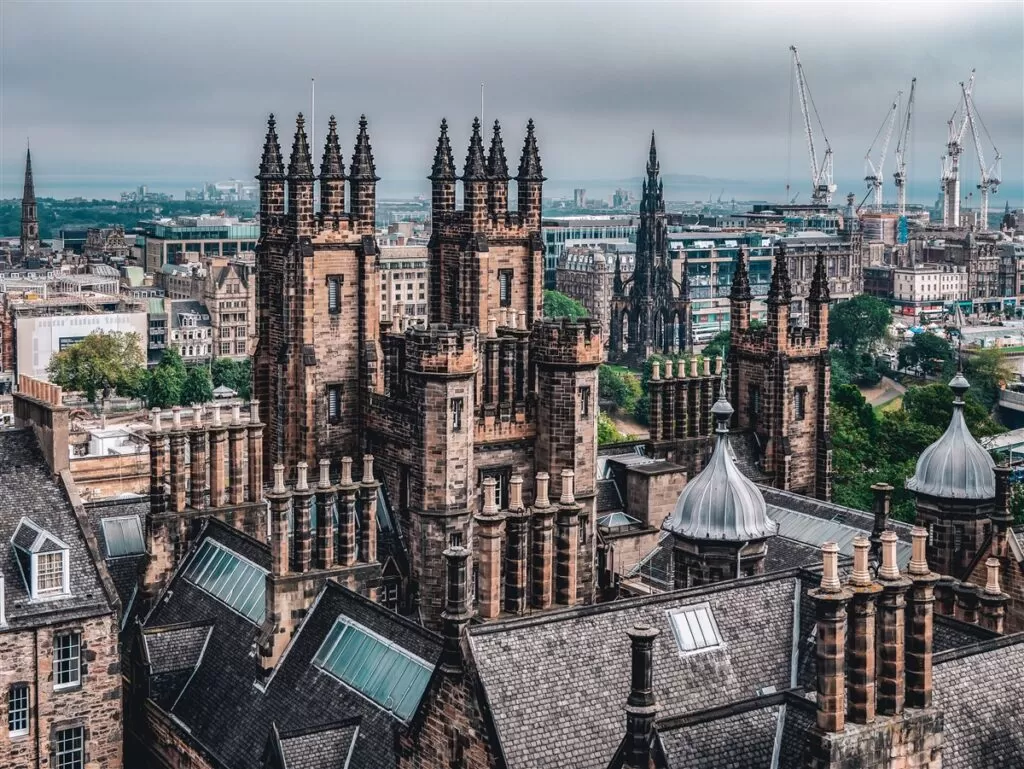
Scotland Landmarks: The Scott Monument
The Scott Monument, located in the heart of Edinburgh, is a striking Gothic monument dedicated to the renowned Scottish writer Sir Walter Scott. Standing tall in Princes Street Gardens, this impressive structure is a prominent landmark in the city and holds great significance in Scottish literature and culture.
Designed by George Meikle Kemp, the Scott Monument is a visually stunning tribute to Sir Walter Scott’s literary legacy. The monument stands at 200 feet tall, adorned with intricately carved statues and ornate detailing. Visitors can climb the narrow spiral staircase to the top, which offers panoramic views of the cityscape and Edinburgh Castle.
To reach the Scott Monument, one can easily access it on foot from various points in the city center of Edinburgh. It is located on Princes Street, a bustling shopping and cultural hub. Additionally, public transportation options, including buses and trams, are readily available, with stops nearby.
For a comfortable stay near the Scott Monument consider the Museum Appartments.
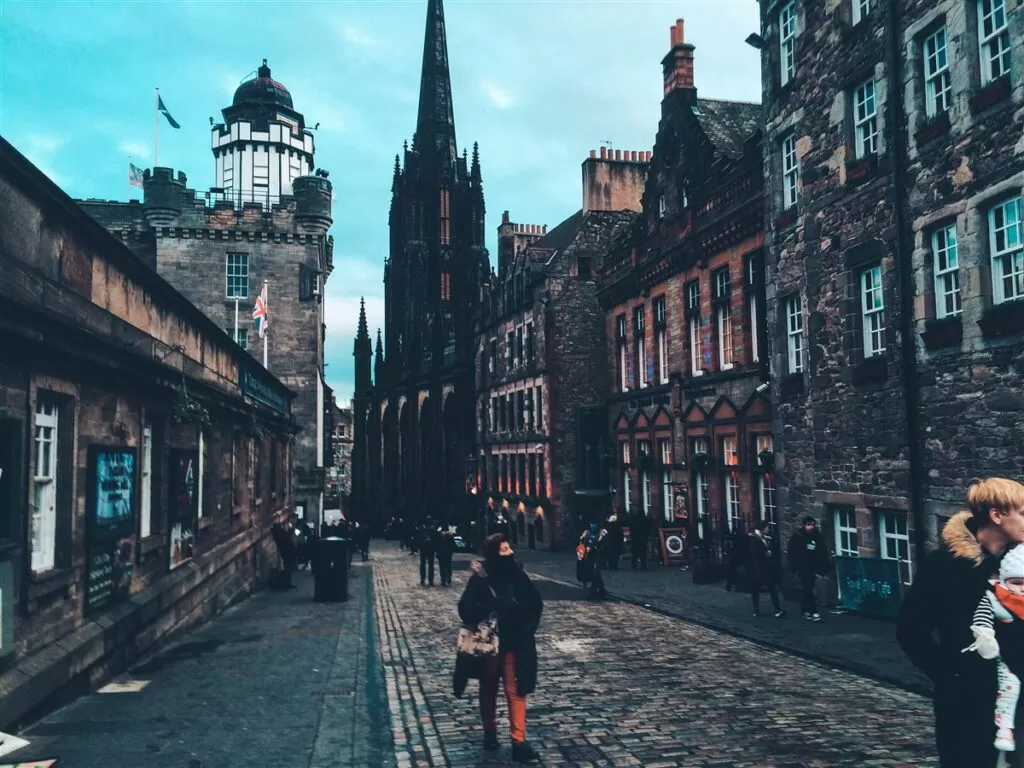
Scotland Landmarks: The Royal Mile
If you’re here during the summertime, you’ll probably recognize The Royal Mile as the where many Edinburgh Fringe shows enthusiastically flyer. But there’s much more to this magnificent street than first meets the eye.
It runs right through the heart of the Old Town and links the Palace of Holyroodhouse with Edinburgh Castle. Traditionally, this spot was a processional route for kings and queens. These days, it’s just lined with statues, old-timey buildings, and even historic bollards that hint at centuries gone by.
To add even more magic to this part of Scotland, it’s absolutely packed with iconic attractions. From the Scottish Storytelling Centre to St Giles’ Cathedral, you can easily spend an entire day traipsing through this section of Edinburgh. Oh, and don’t forget the many restaurants and pubs that you can visit for a cheeky refuel!
Although you’ll pay through the nose to stay by the Royal Mile, Abercorn Guest House is just gorgeous. It’s an old Victorian family home with an iron staircase, a (private!) walled garden, and plenty of charm.
If you’re heading to The Royal Mile straight from Edinburgh Airport, you can hop on the 100 Tram line and get off at St. Andrew Square. From here, it’s just a short 10-minute walk.
By Grace from Pixiedust and Passports
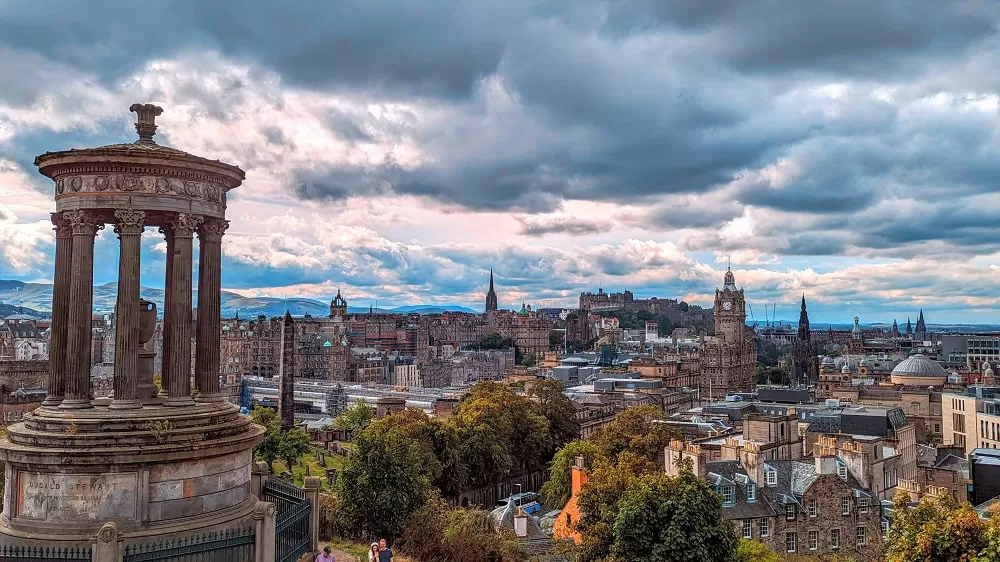
Scotland Landmarks: Calton Hill
This is one of the most popular spots in Edinburgh to capture panoramic city views — no matter the season, it’s always worth the short climb (1.3 km). On a clear day, visitors can enjoy a birds-eye view of the Royal Mile, Princes Street, Edinburgh Castle, and even the extinct volcano, Arthur’s Seat!
While the hill is well known for its picture-perfect shots, it’s also home to a collection of some of Scotland’s most important monuments — the National Monument and the Nelson Monument. The National Monument is the most unique; it looks like it’s been plucked from the Parthenon in Athens (the monument was never fully completed).
The monument honors Scottish soldiers who fought in the Napoleonic Wars. The Nelson Monument is also fascinating; many say it looks like an upside-down telescope. The monument commemorates the life of Admiral Lord Nelson and also contains a time ball at the top which in the mid-1800s helped ships set their time-pieces.
After hiking up the hill and enjoying the view, you’ll want to grab a bite to eat at Holy Cow; it’s one of the best vegan restaurants in Edinburgh! If you’re looking for a great place to stay to explore the city, check out Fraser Suites. It is right around the corner from the Royal Mile and holds a silver certification with Scotland’s Green Tourism Awards for its sustainability efforts.
By Rebecca from Veggies Abroad
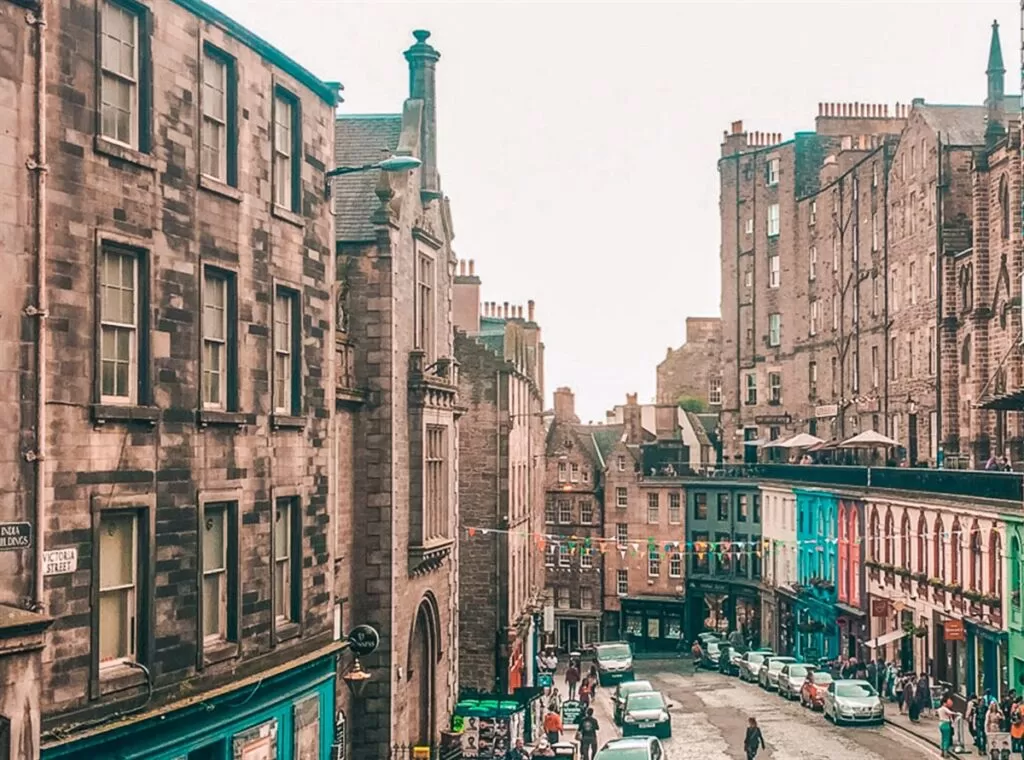
Scotland Landmarks: Victoria Street
Victoria Street is a famous and historic street in the Old Town of Edinburgh, Scotland, known for its colorful buildings, charming shops, and lively atmosphere. It is often described as one of the most picturesque streets in the city and one of the best photo spots in Edinburgh, making it a popular spot for tourists and locals alike.
What makes Victoria Street special is its unique architecture and rich history. The street was built in the 1820s and features a curved shape that follows the path of the old city wall. The buildings on Victoria Street are tall and narrow, with brightly painted facades that house an eclectic mix of independent shops, cafes, and restaurants.
Victoria Street is considered a landmark in Scotland because of its iconic appearance and historic significance. The street has been used as a filming location for movies and TV shows, including the Harry Potter films, which featured the street as the inspiration for Diagon Alley.
To get to Victoria Street, you can take a bus or walk from the city center. It is located in the Old Town area of Edinburgh, just a short distance from Edinburgh Castle and the Royal Mile. If you’re walking, you can follow signs for the Royal Mile and look for the curved street with colorful buildings.
A good local-run guest house accommodation nearby to visit Victoria Street is the Grassmarket Hotel. It is located just a few minutes walk from Victoria Street and offers comfortable rooms and a welcoming atmosphere.
By Catrina from 24 Hours Layover
There you go! I hope you enjoyed this comprehensive list of some of the most wonderful landmarks in Scotland to visit on your next trip.
Let me know in the comments below if you have any questions or drop me a message through my contact page.
Furthermore, feel free to check out my travel resources which make trip planning a breeze, and have a look at my favorite travel gear for conscious travelers!
ENJOY!
Disclaimer: This post may include affiliate links. If you click on them, I may receive a commission at no extra cost to you.



Hi! I am Annelies and this is Travelers & Dreamers, a blog about conscious travel which means traveling in a more mindful way, with a positive impact on the world and yourself!
On this website, I cover different topics like slow travel, plant-based food guides, responsible travel, sustainable packing, eco-travel, and more!
Latest Posts

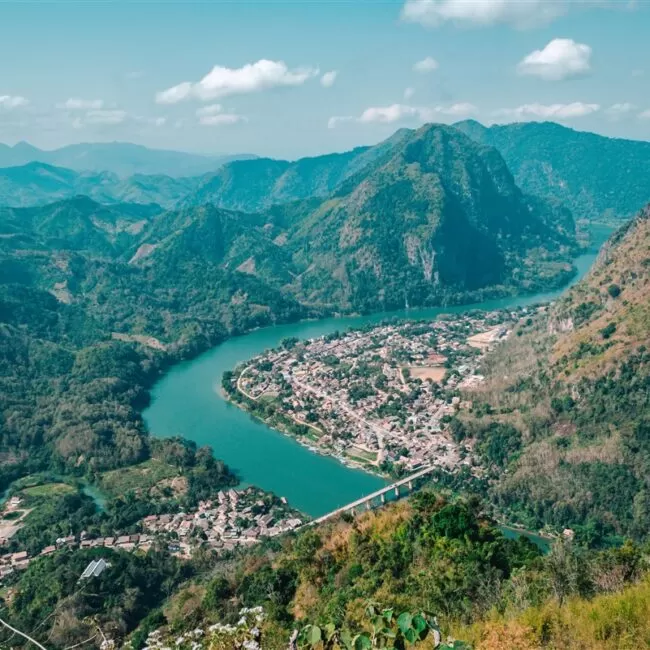
15 Best Things to Do in Nong Khiaw, Laos (2024)
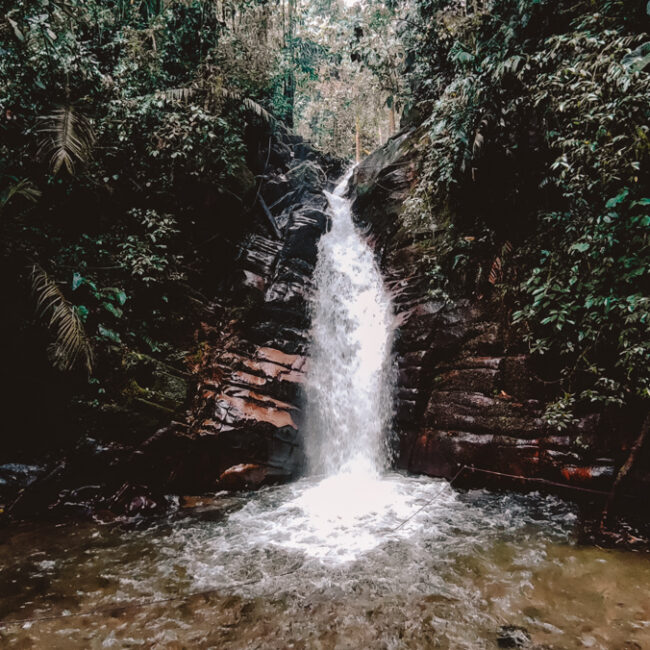
Santa Rita, Salento: All You Need to Know
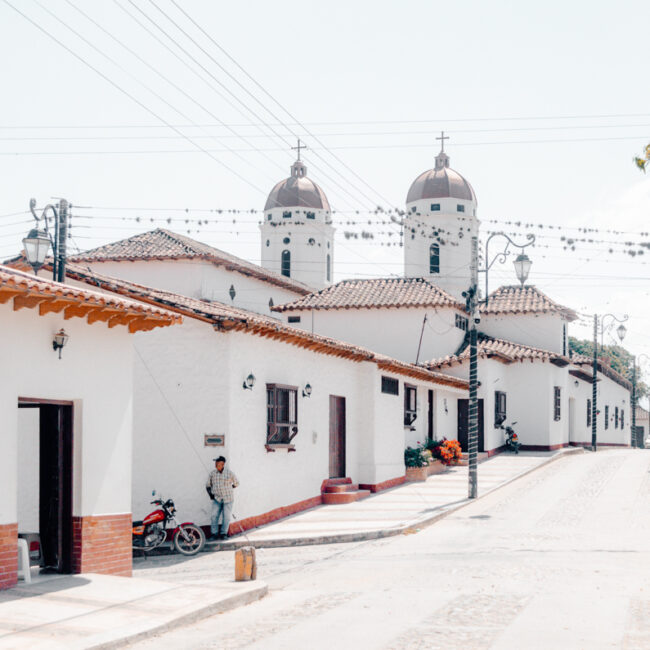
La Playa de Belen, Colombia: An Easy Travel guide!
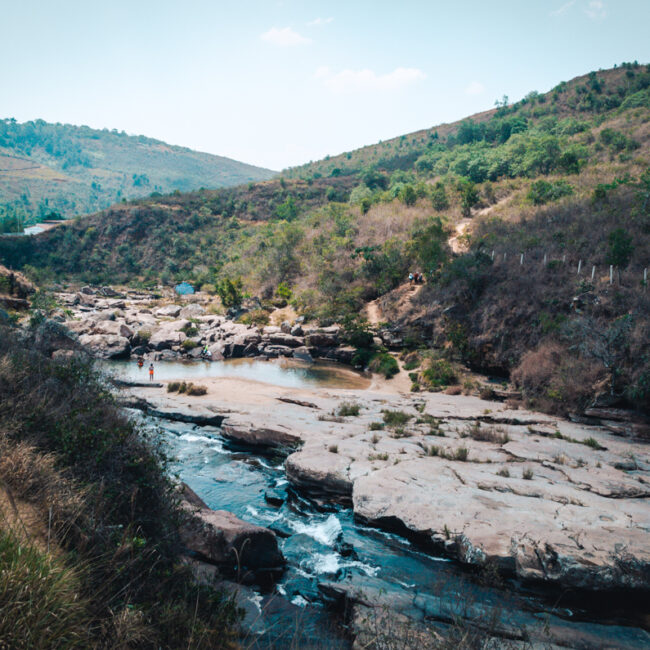
How to Visit the Pescaderito in Curiti (Near San Gil)
Do you want to receive my latest finds on conscious and sustainable travel directly to your inbox? Subscribe here!
© COPYRIGHT TRAVELERS&DREAMERS, 2023.